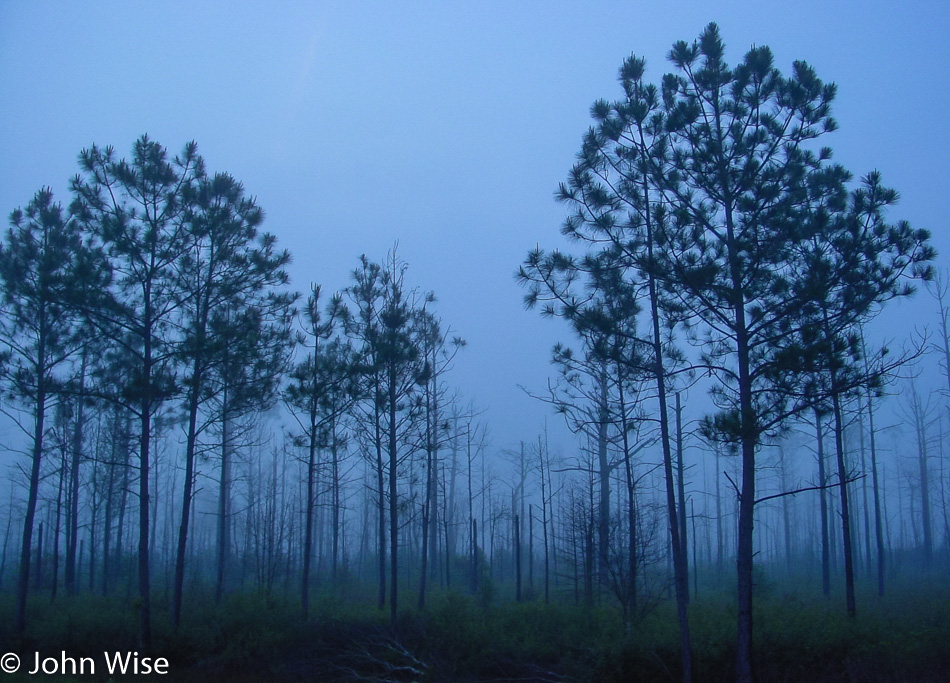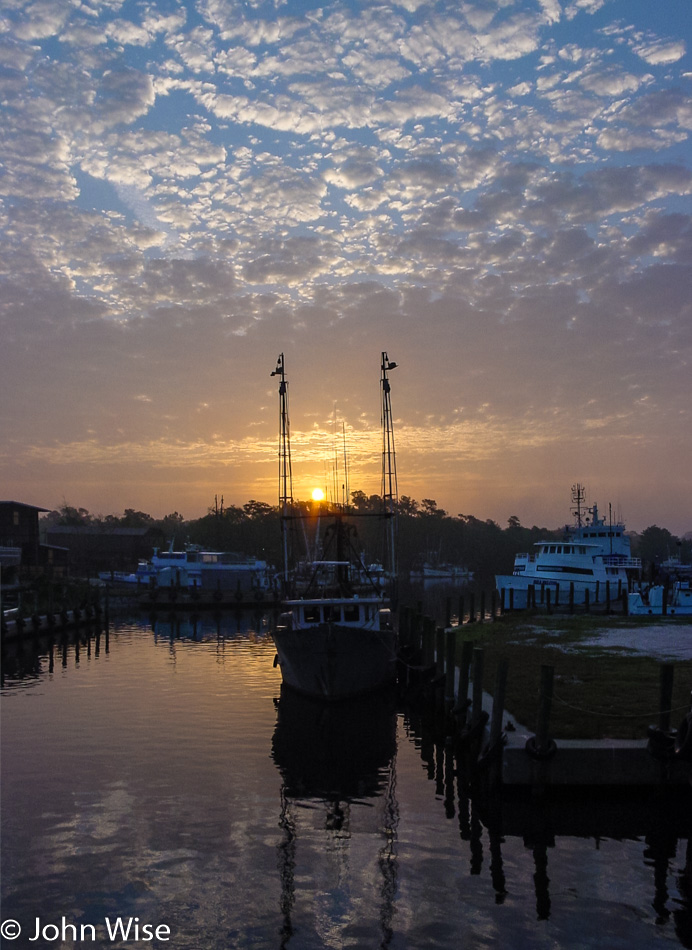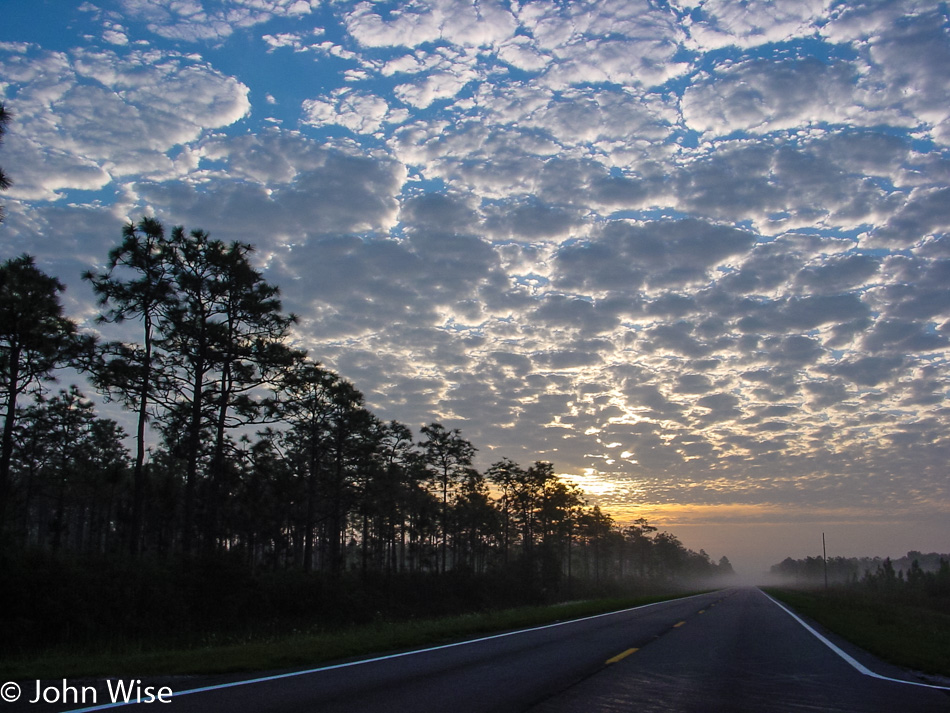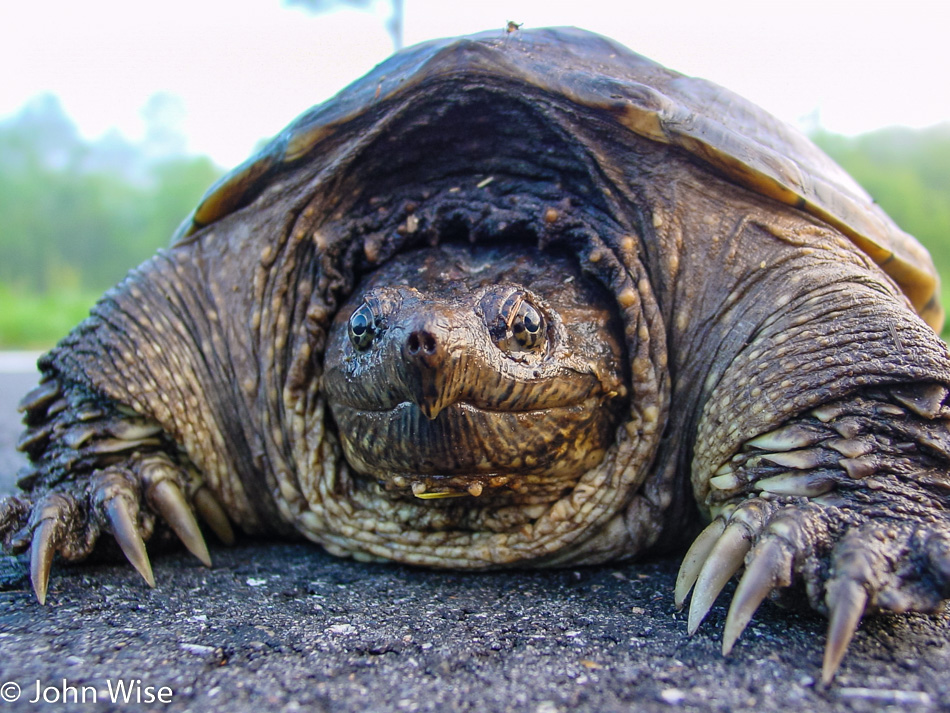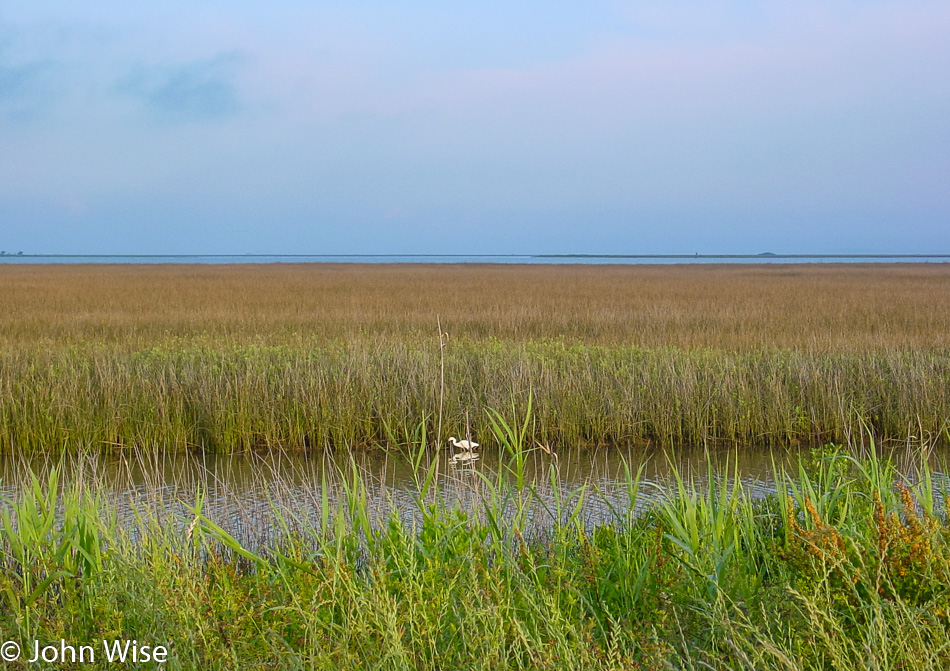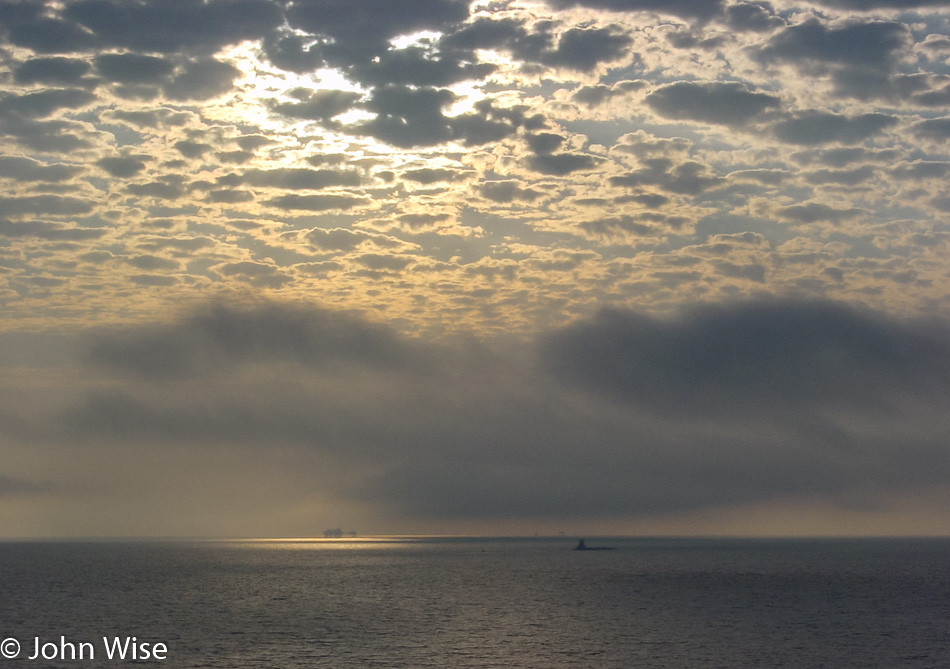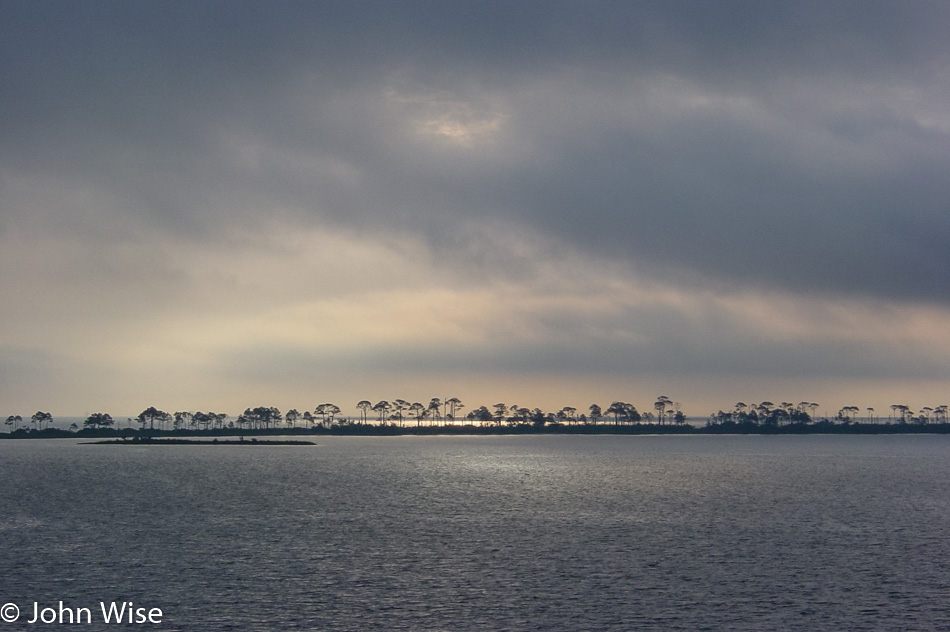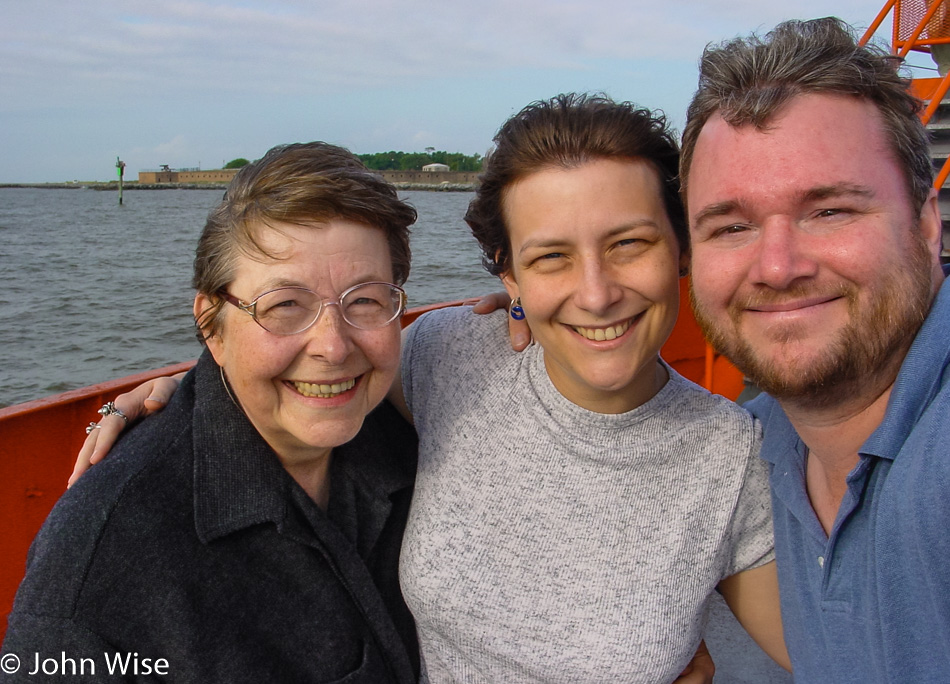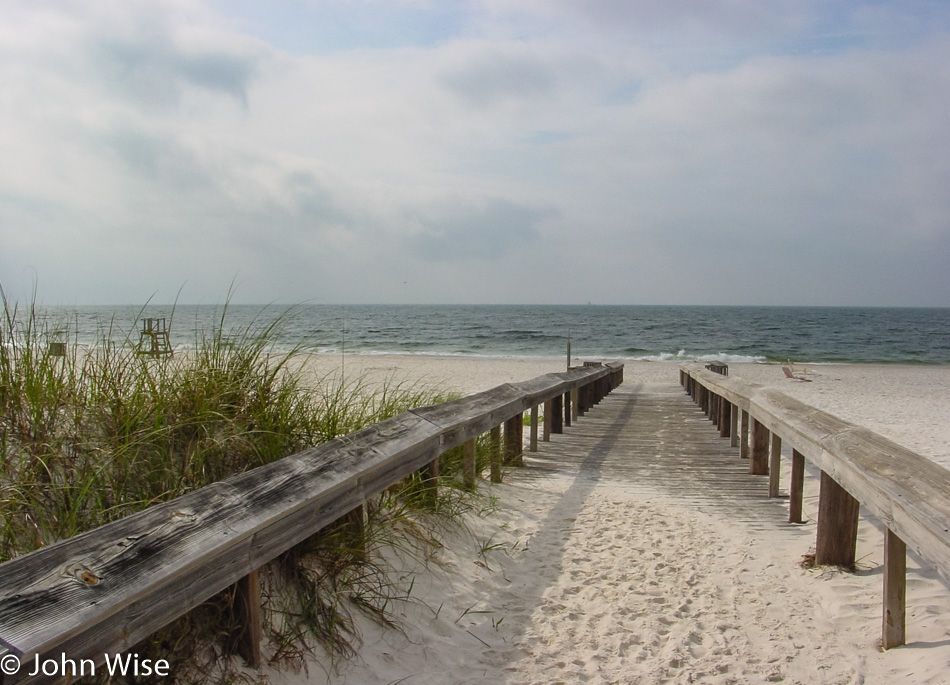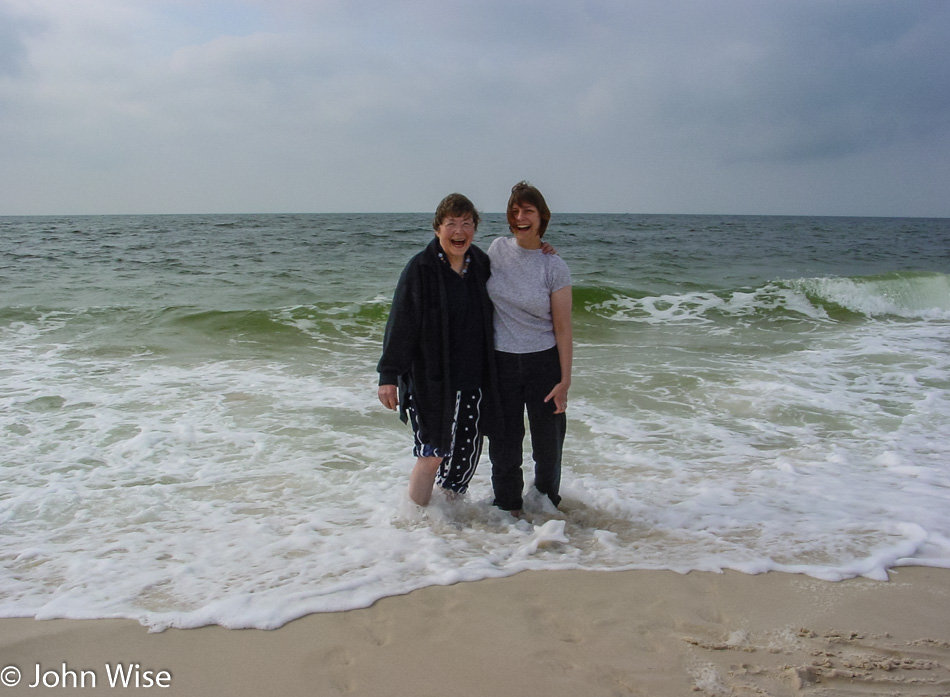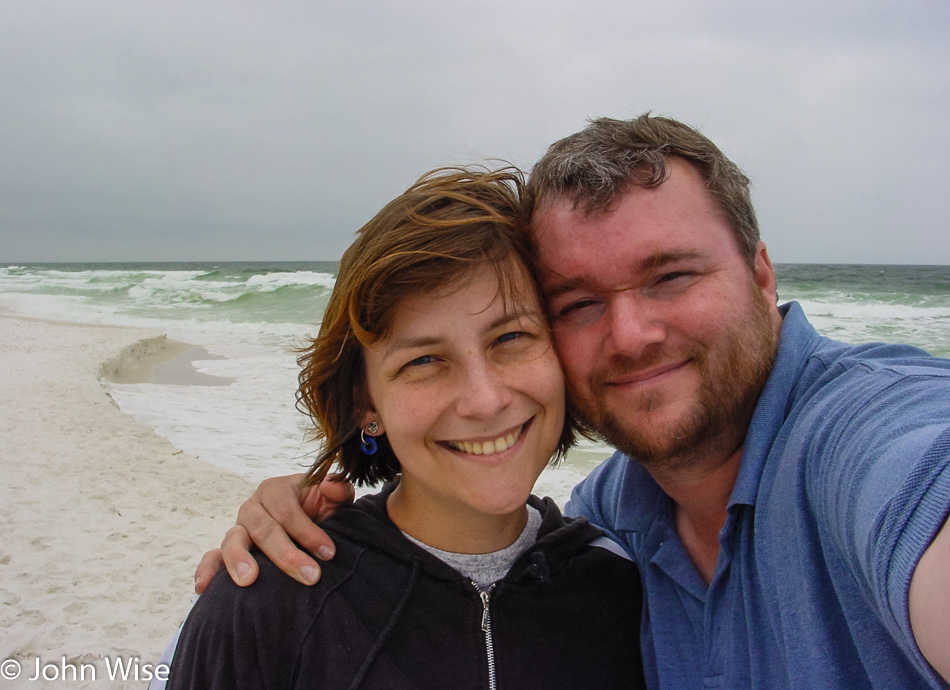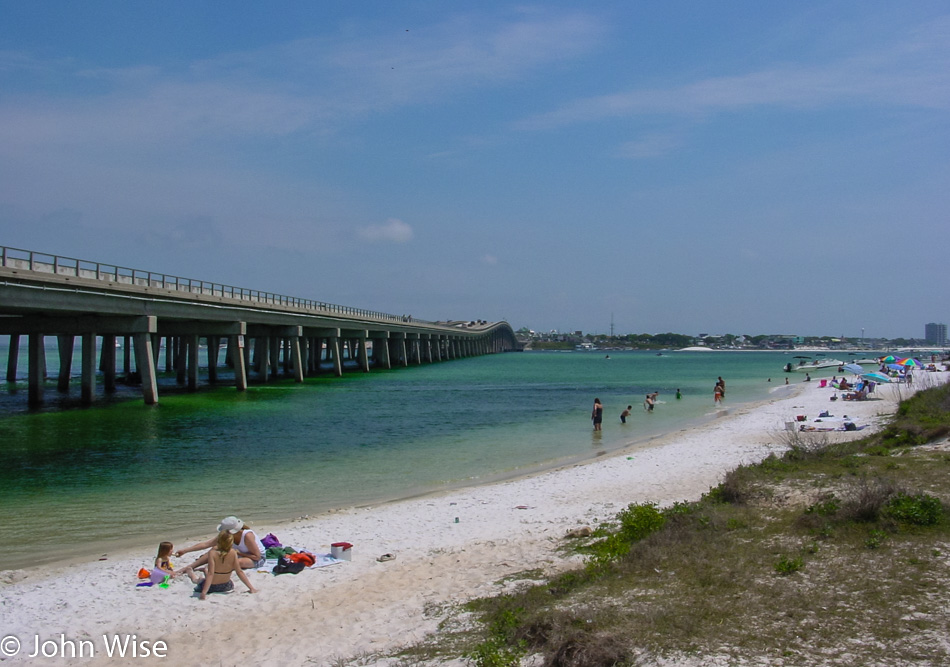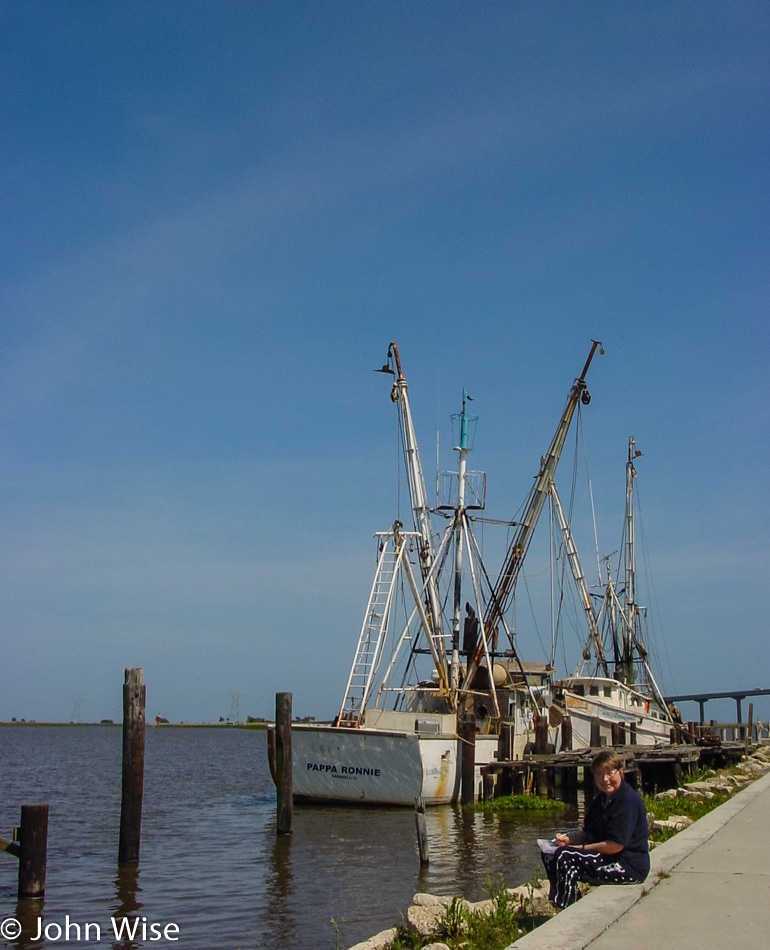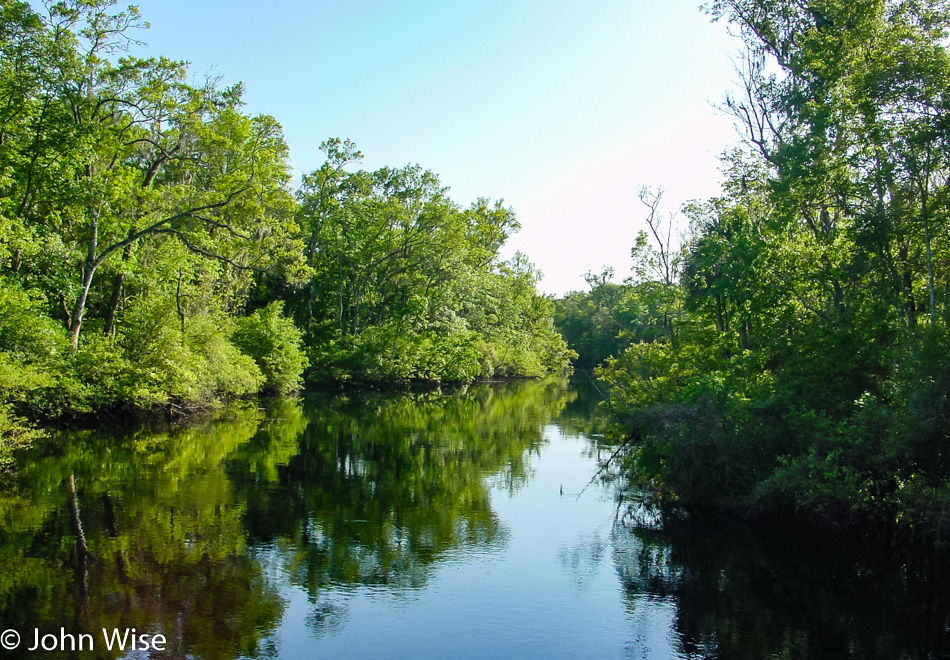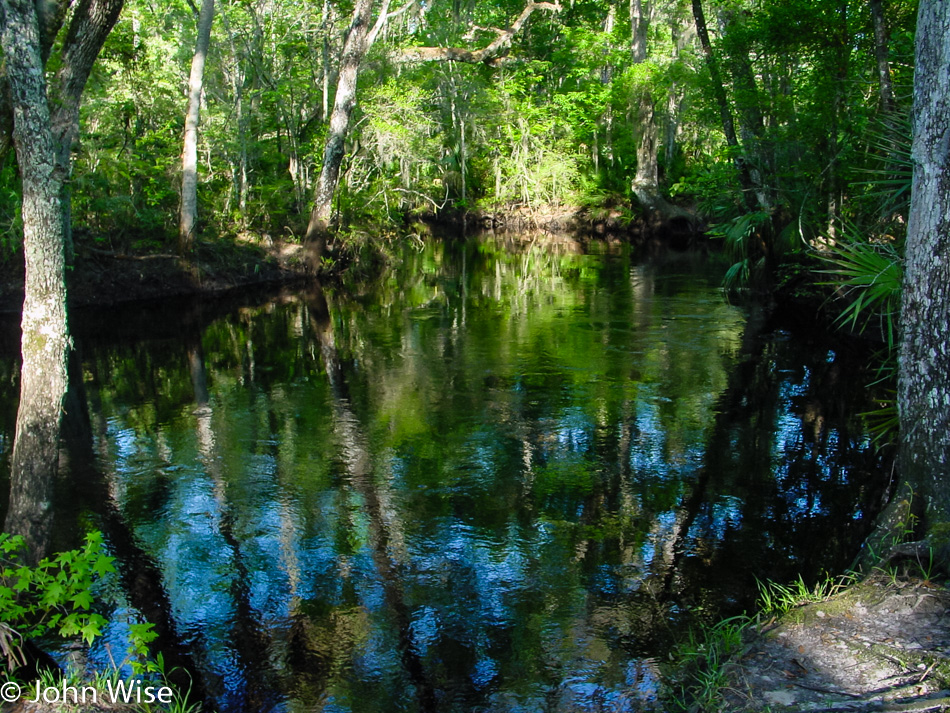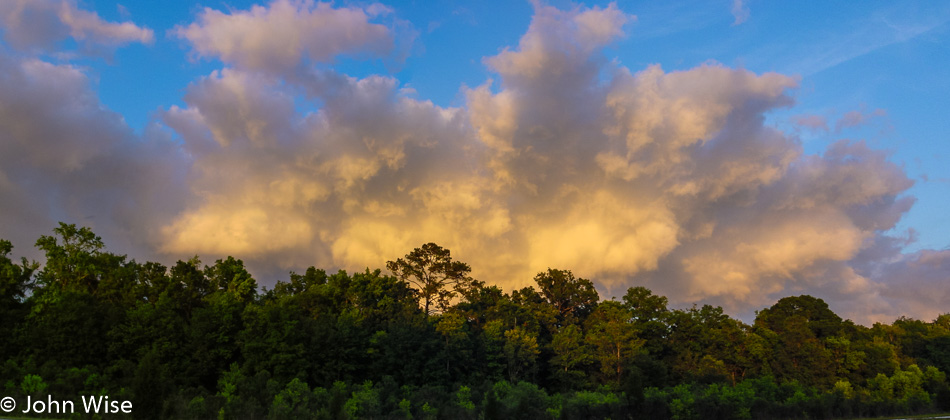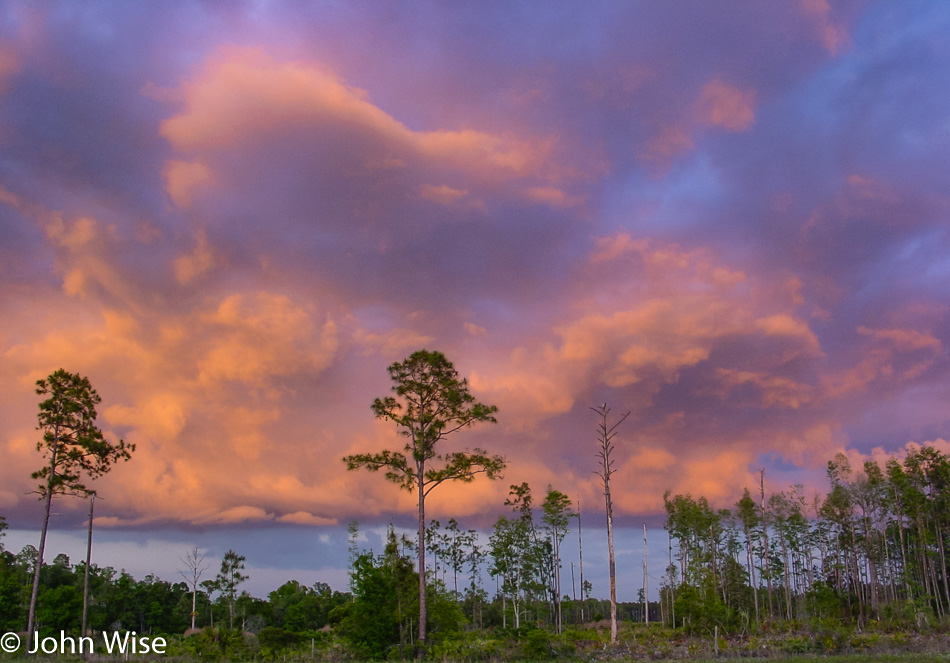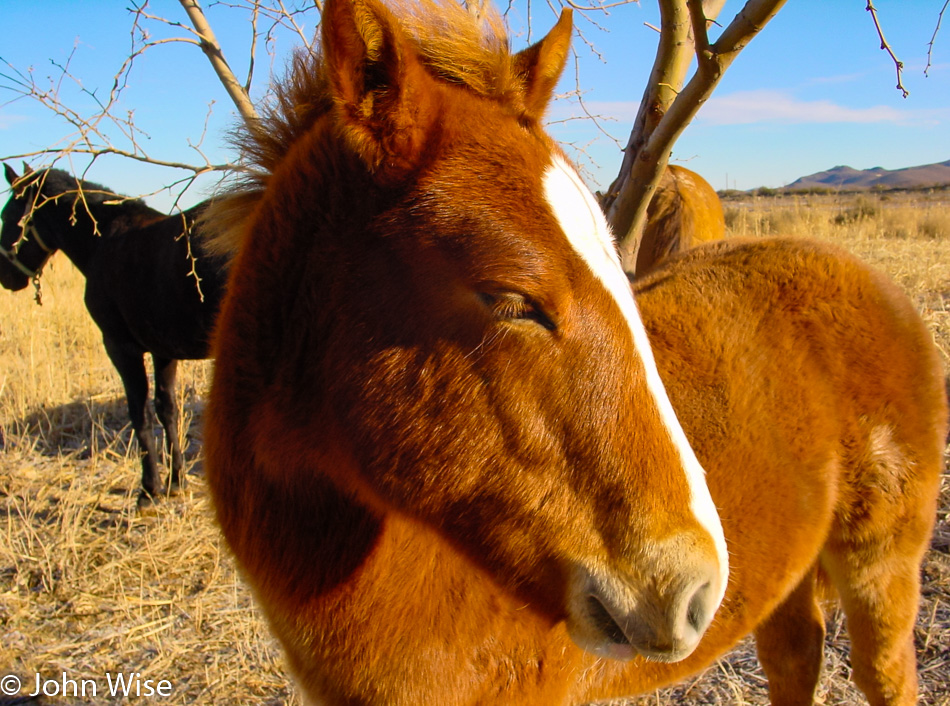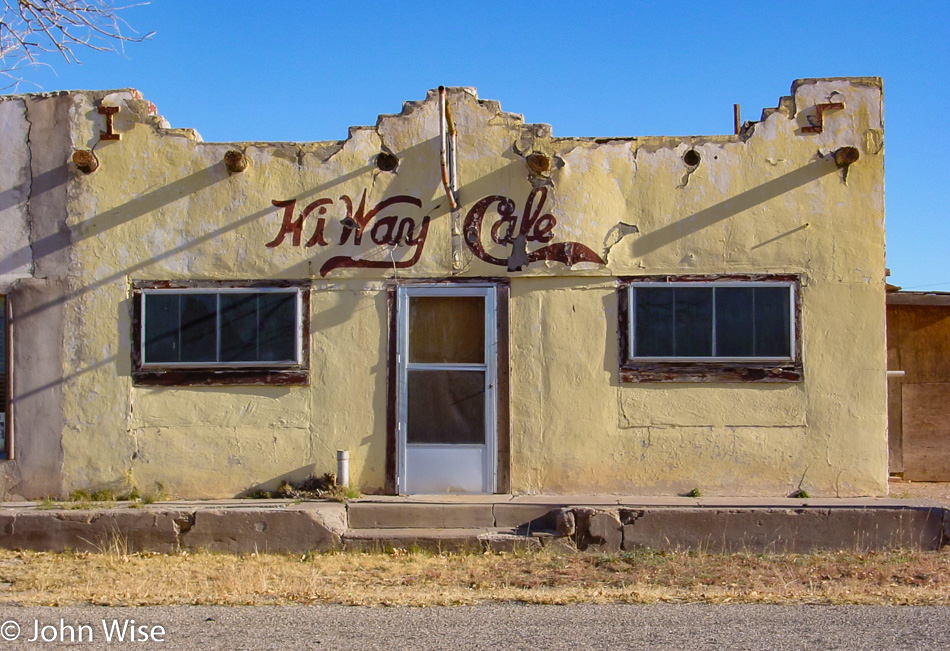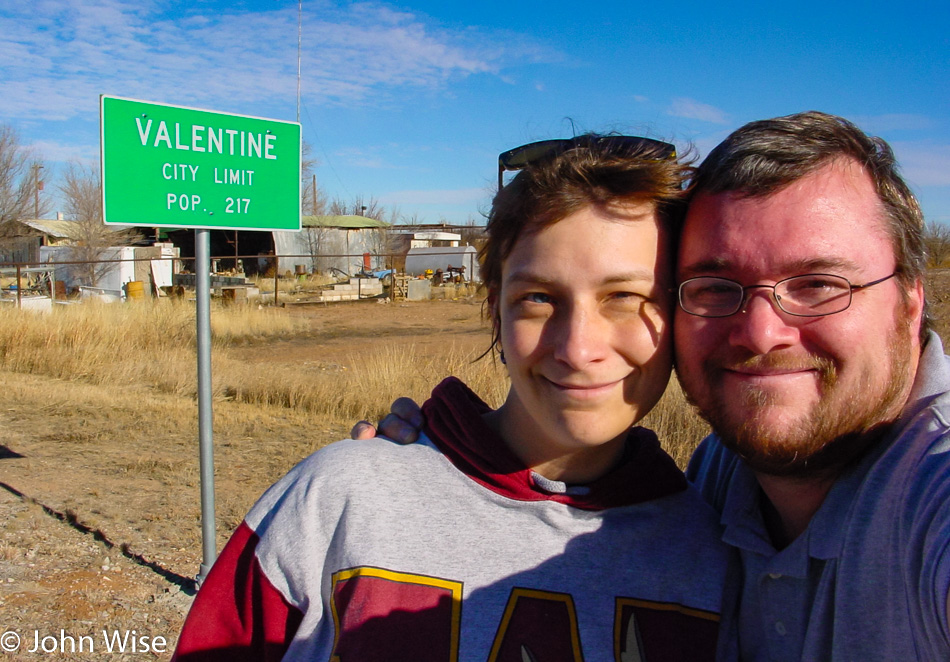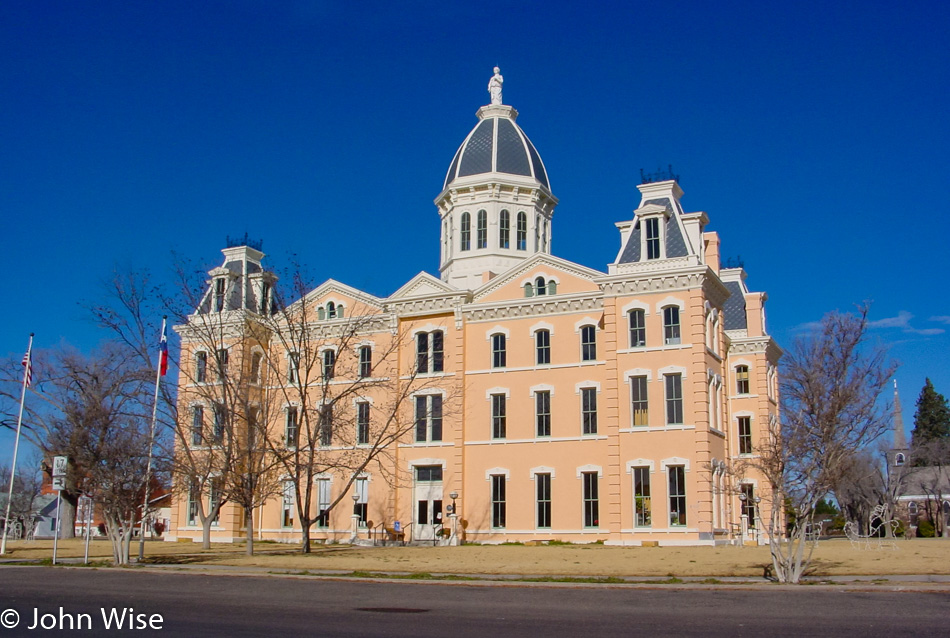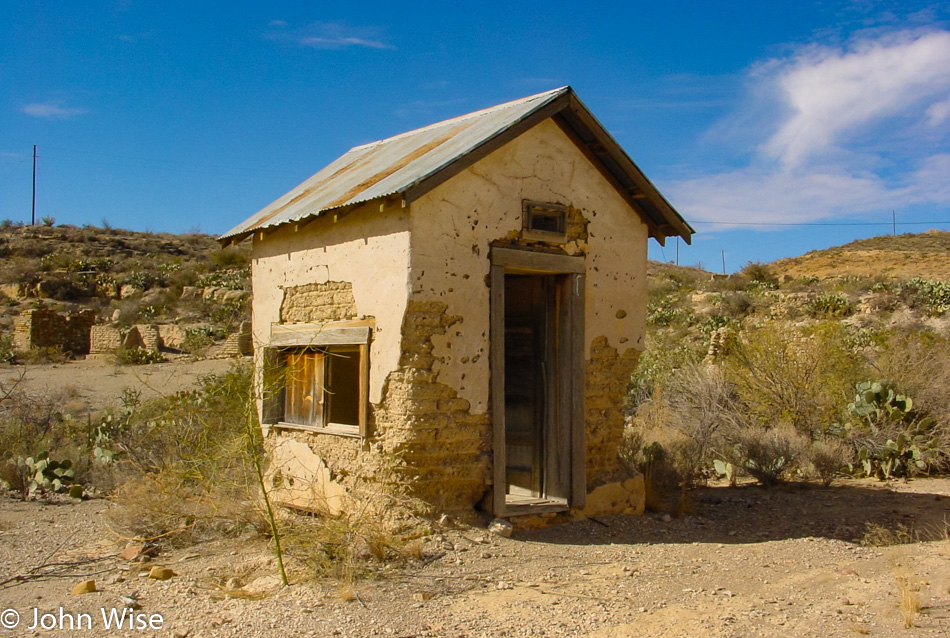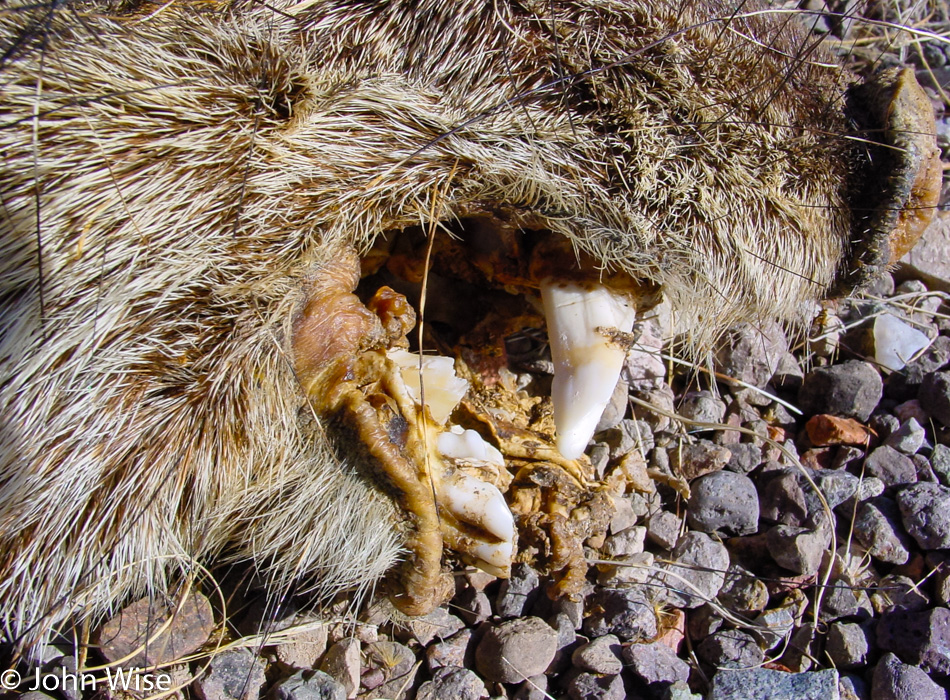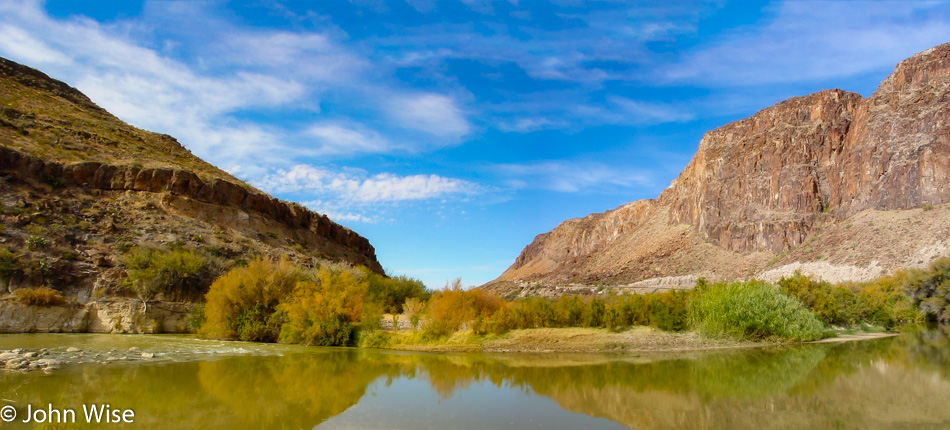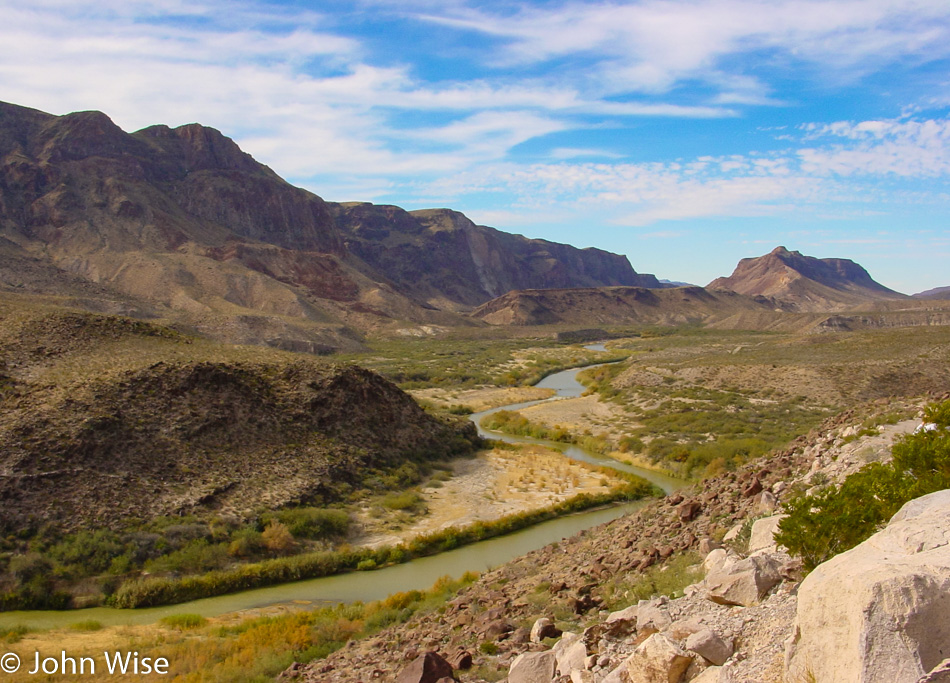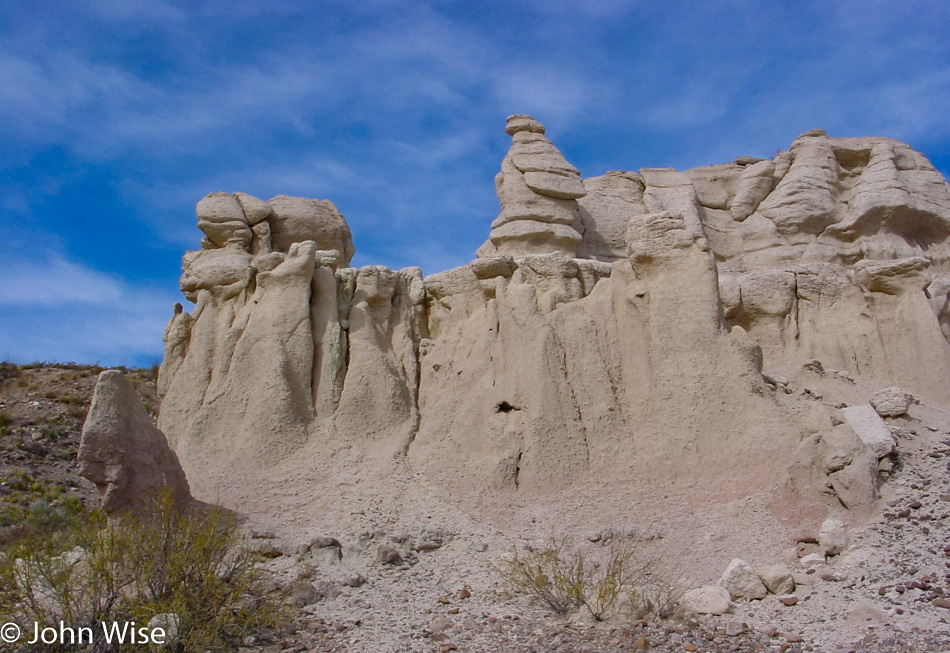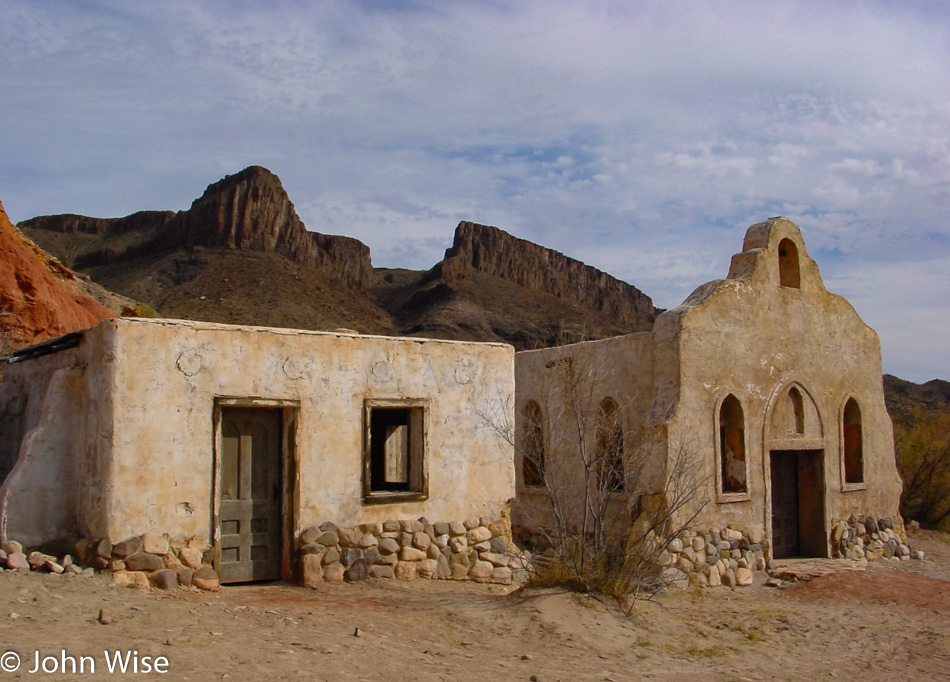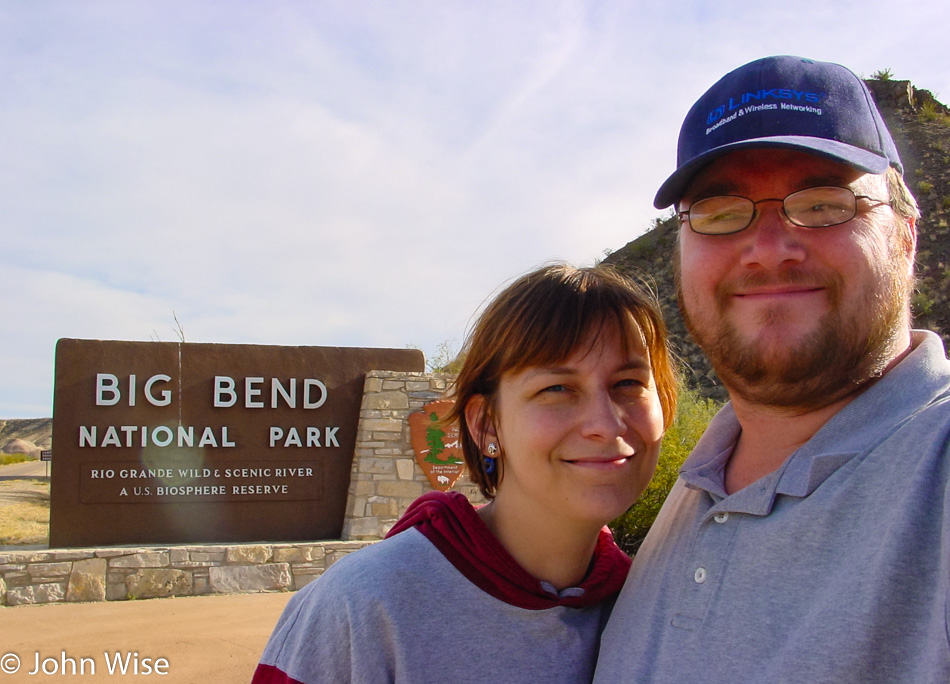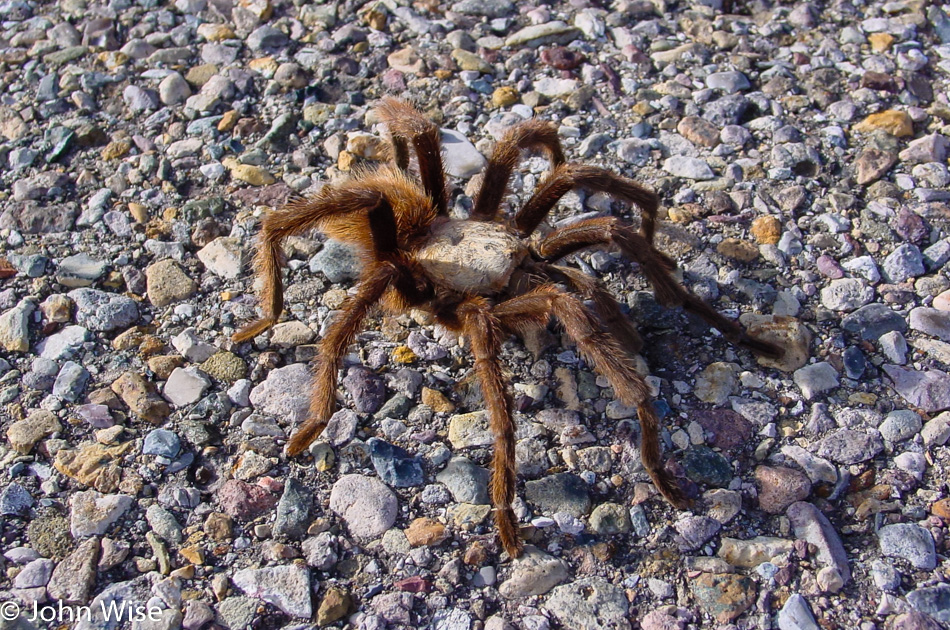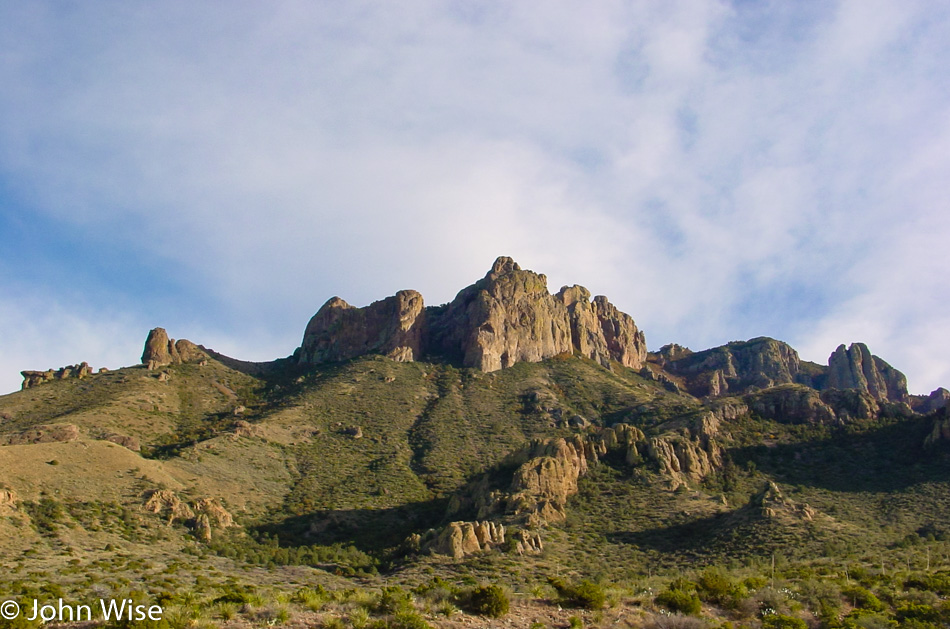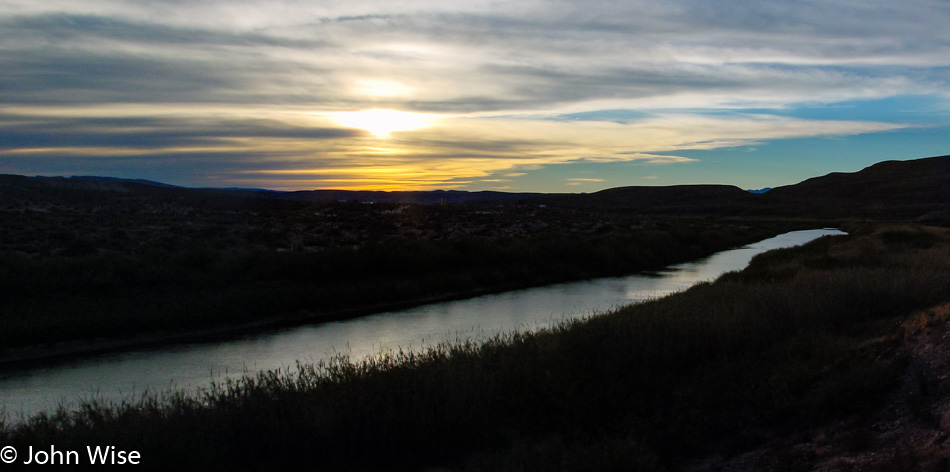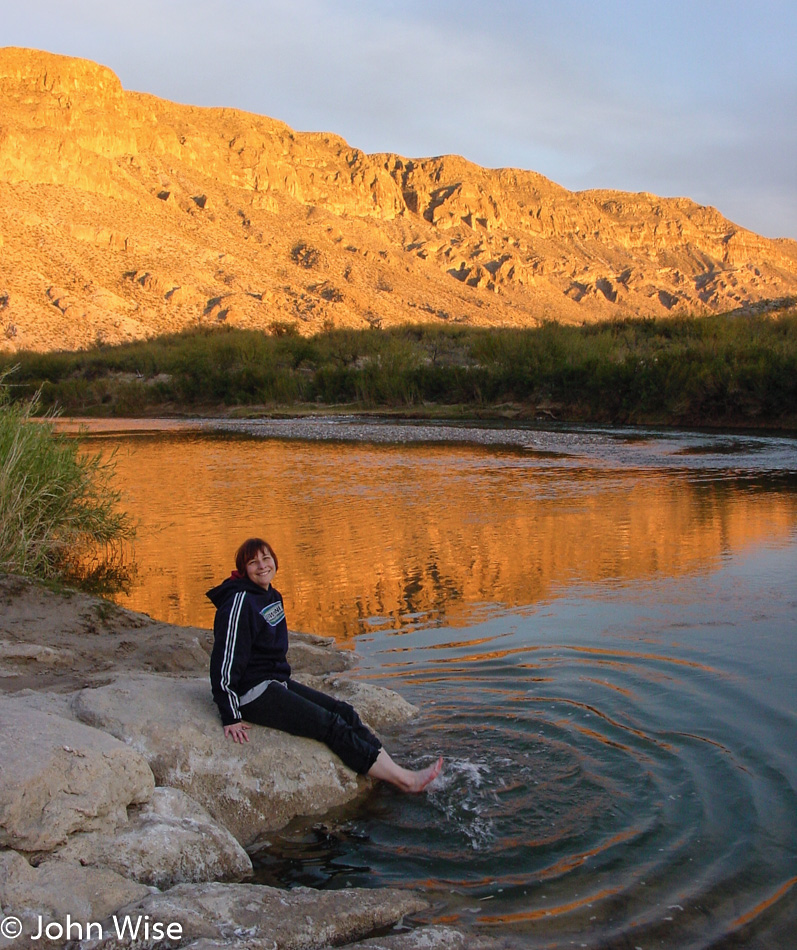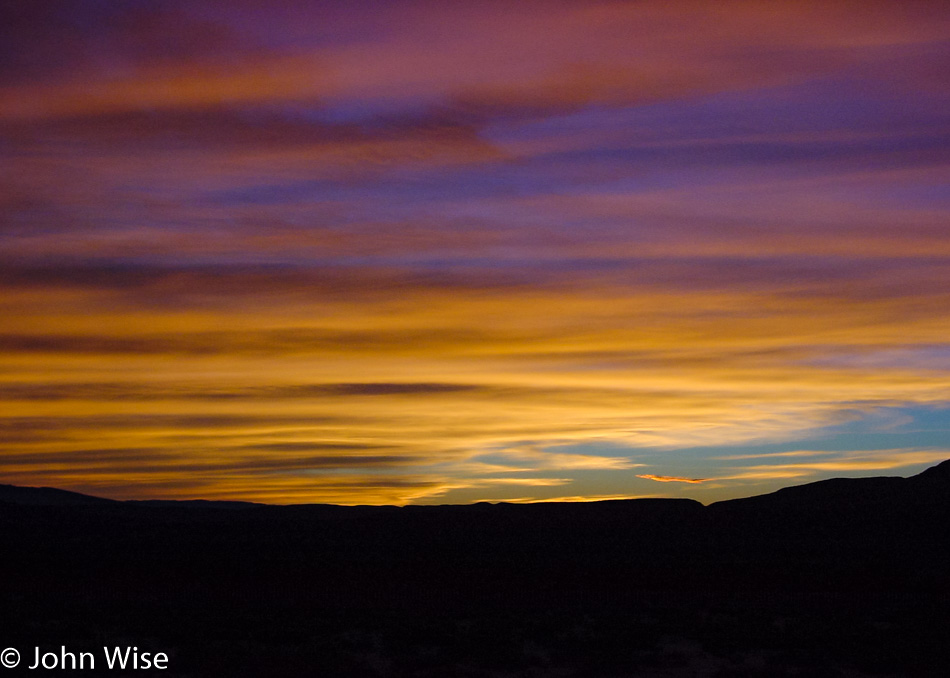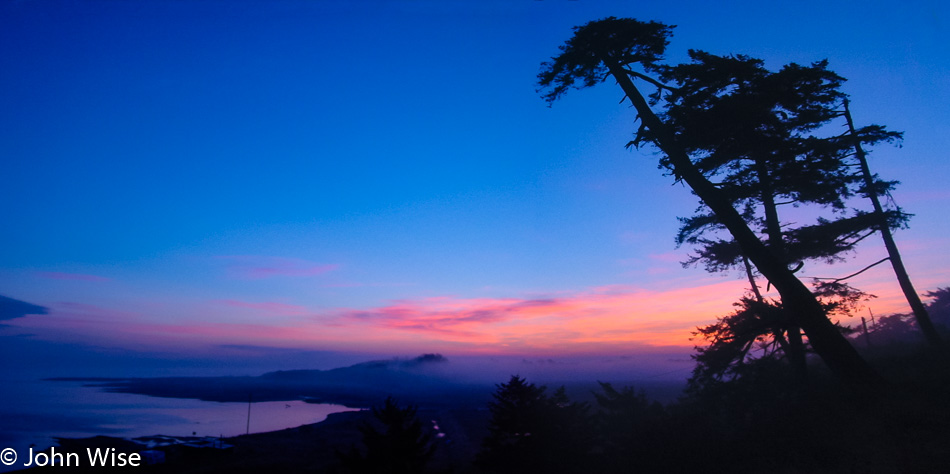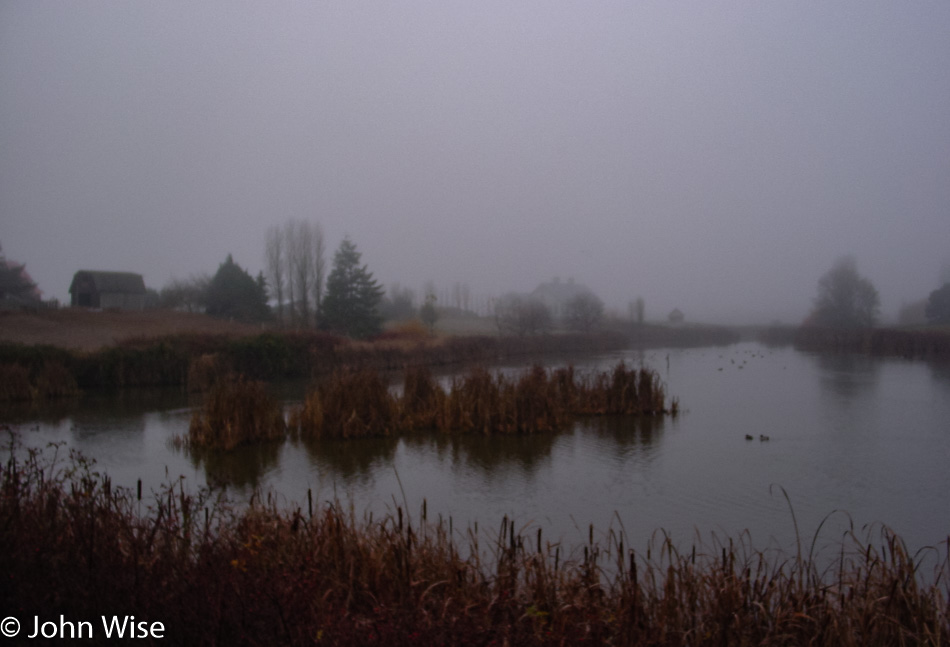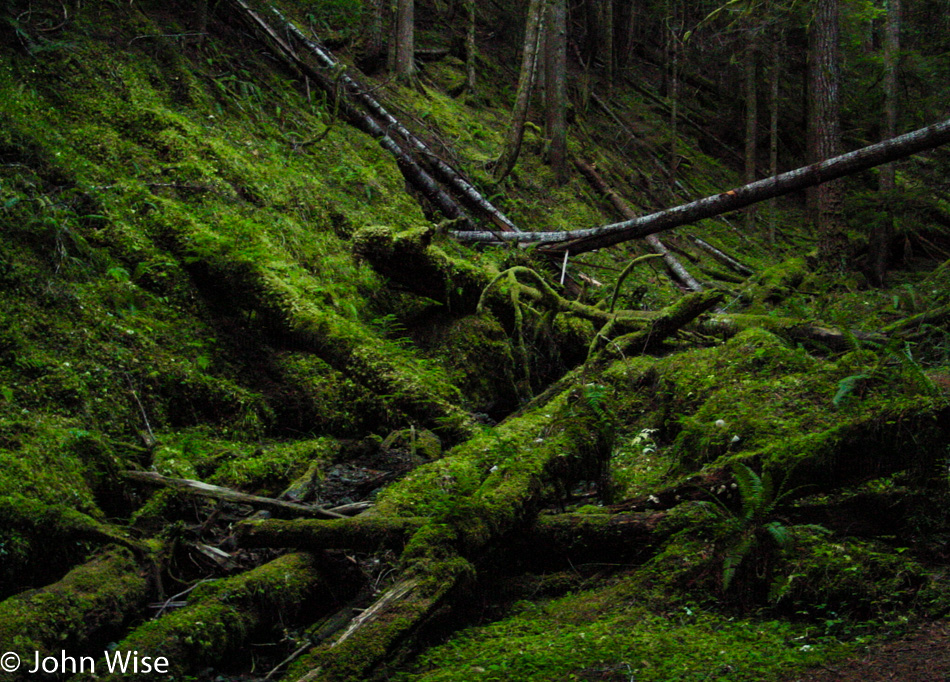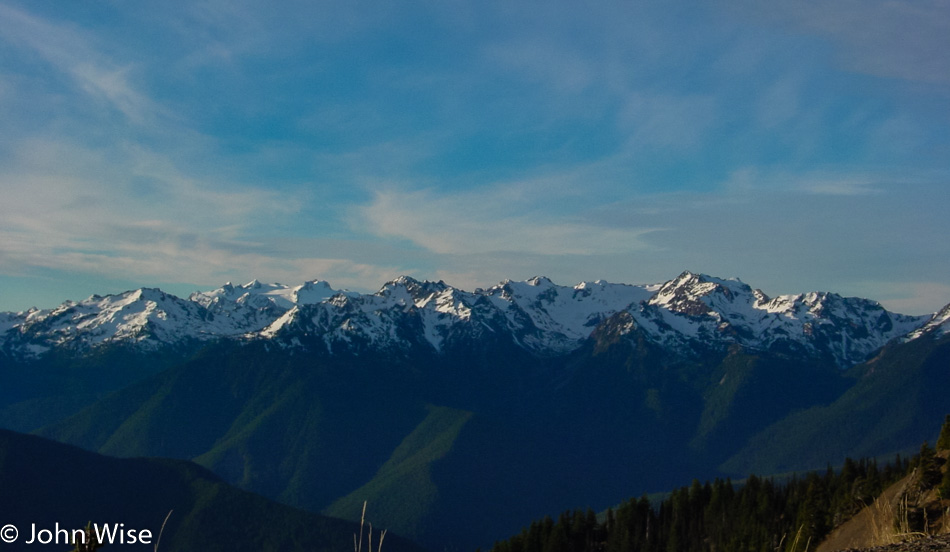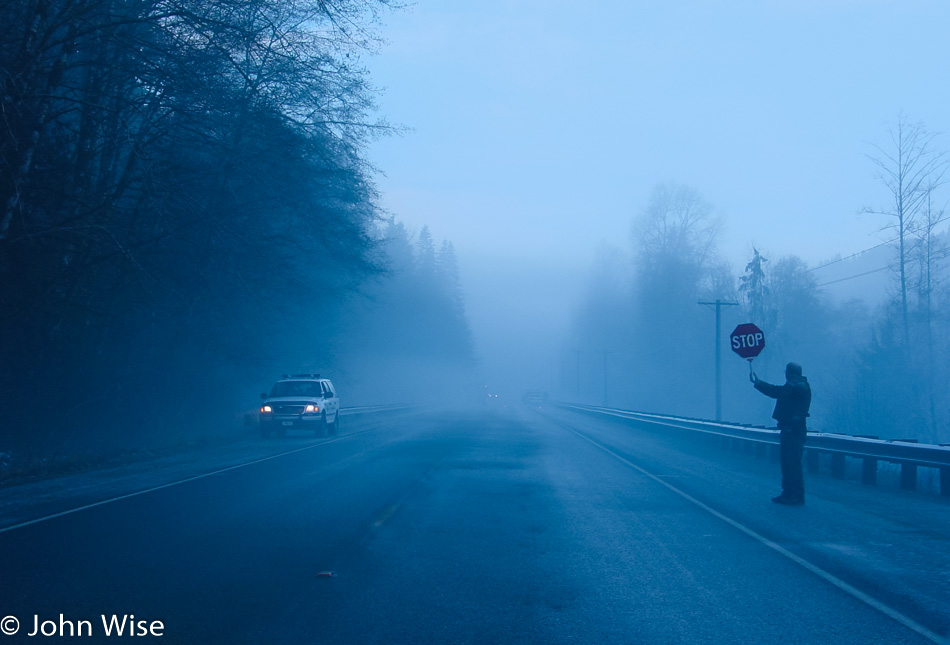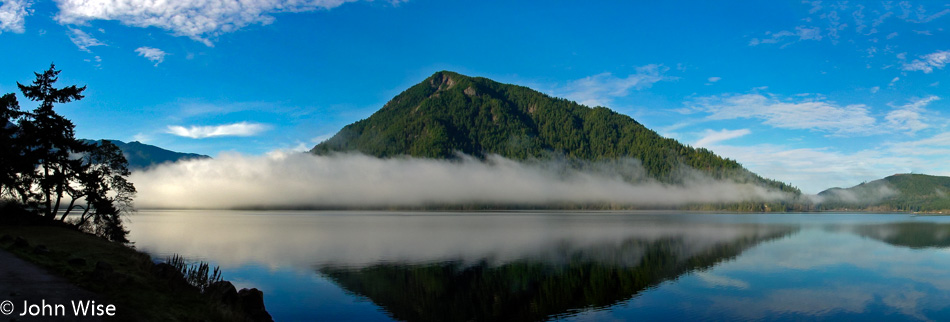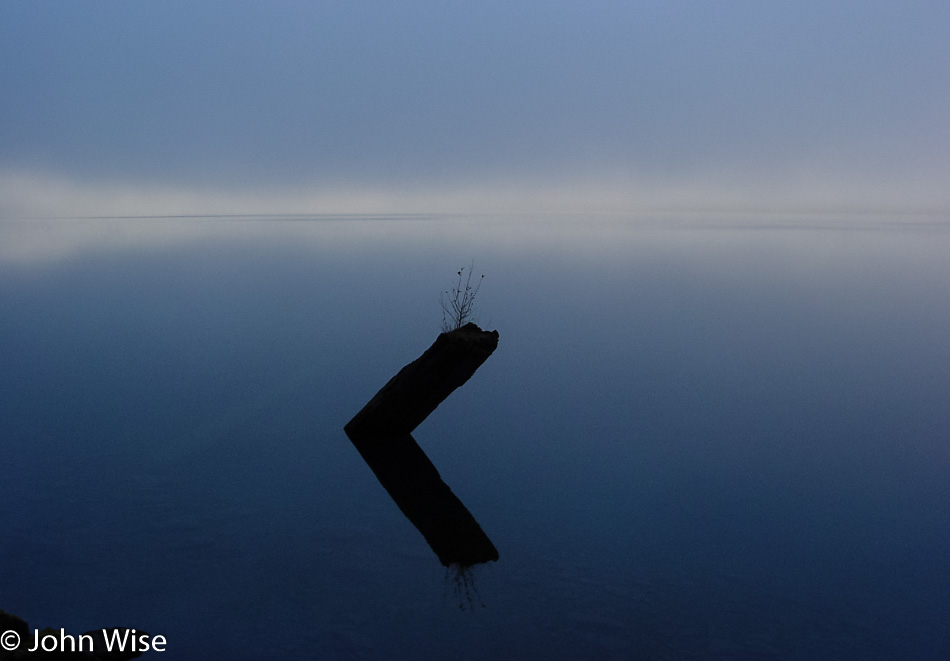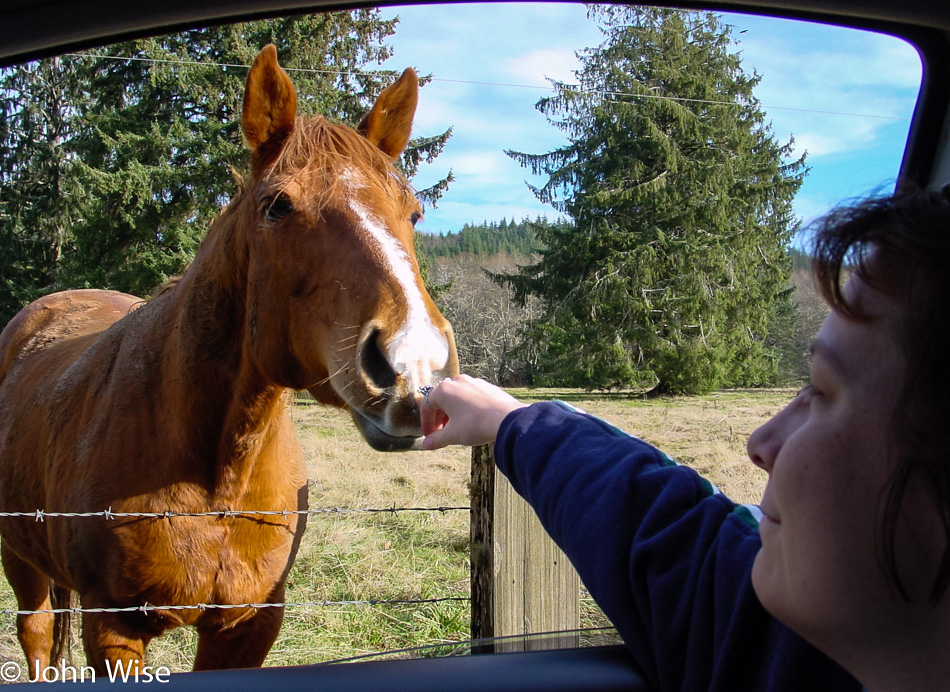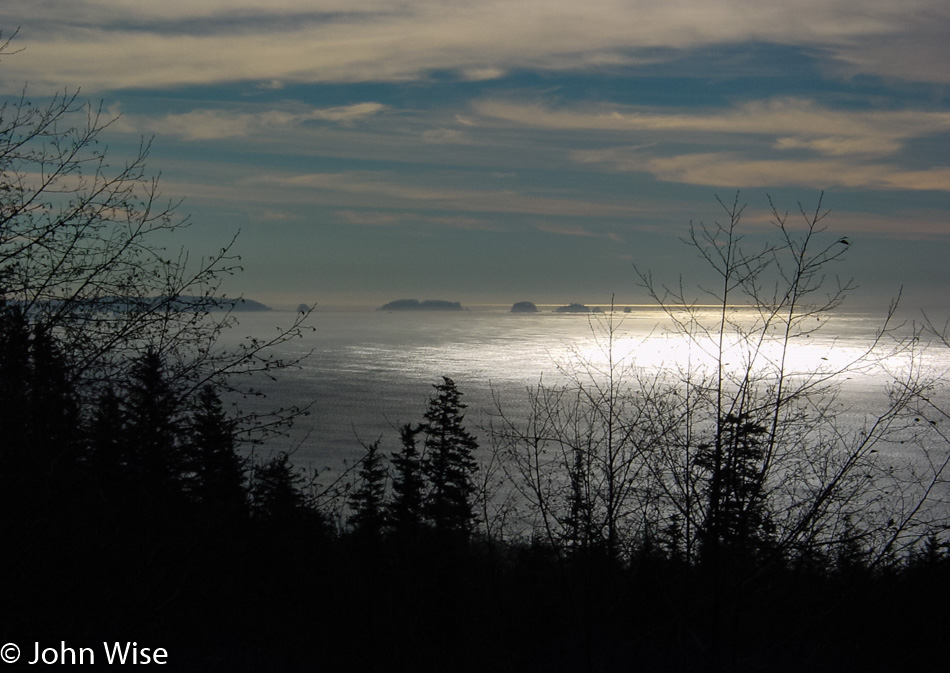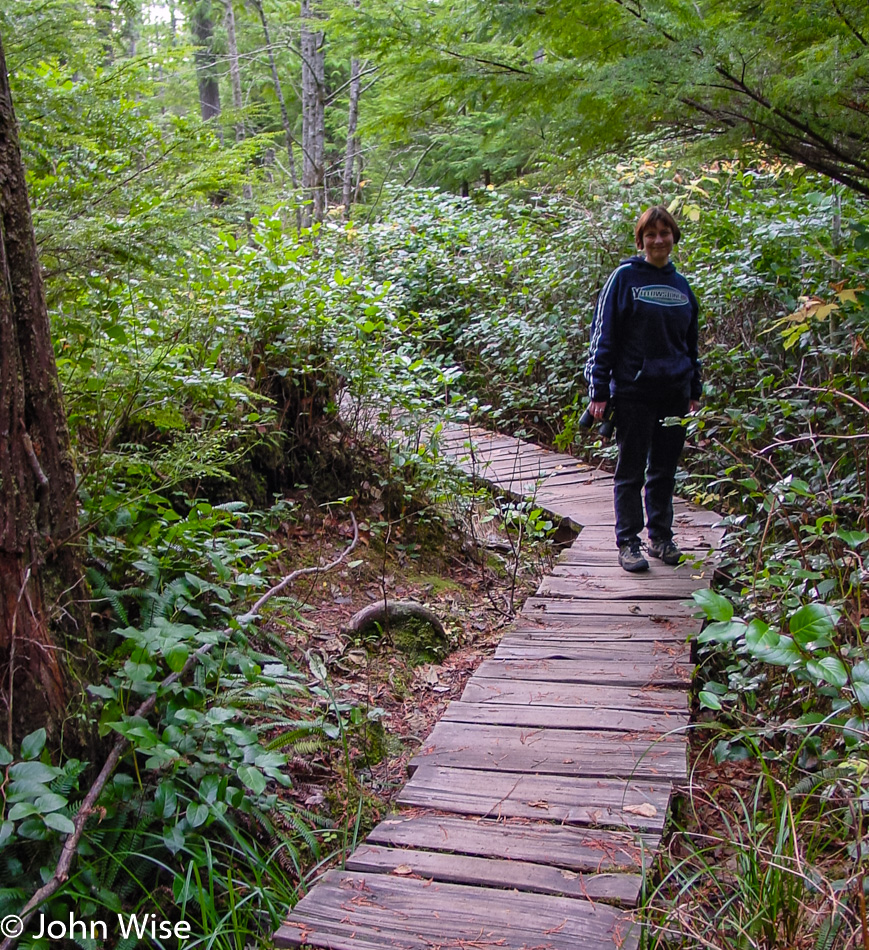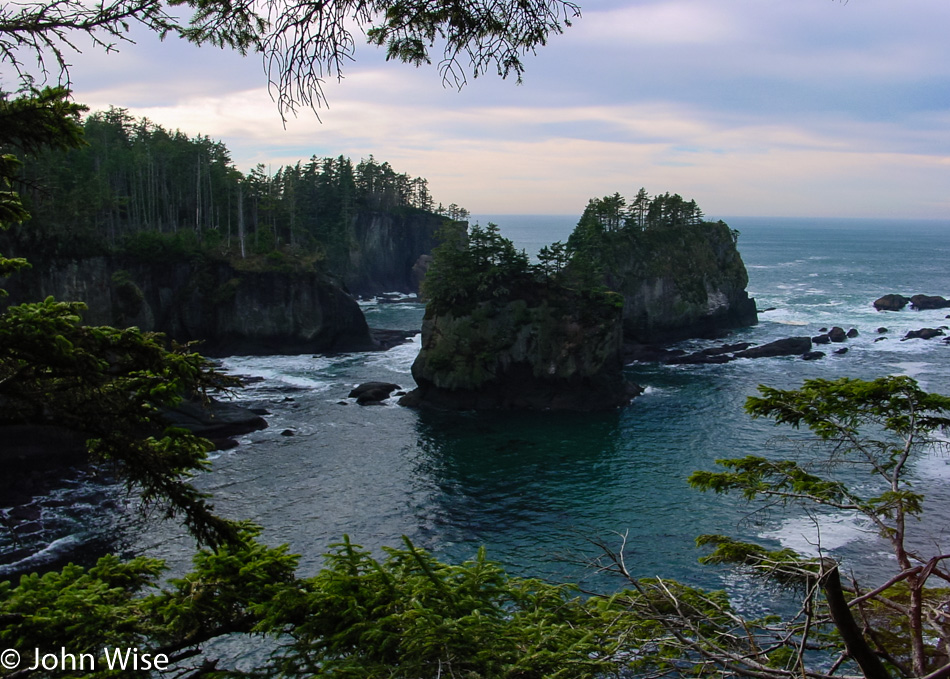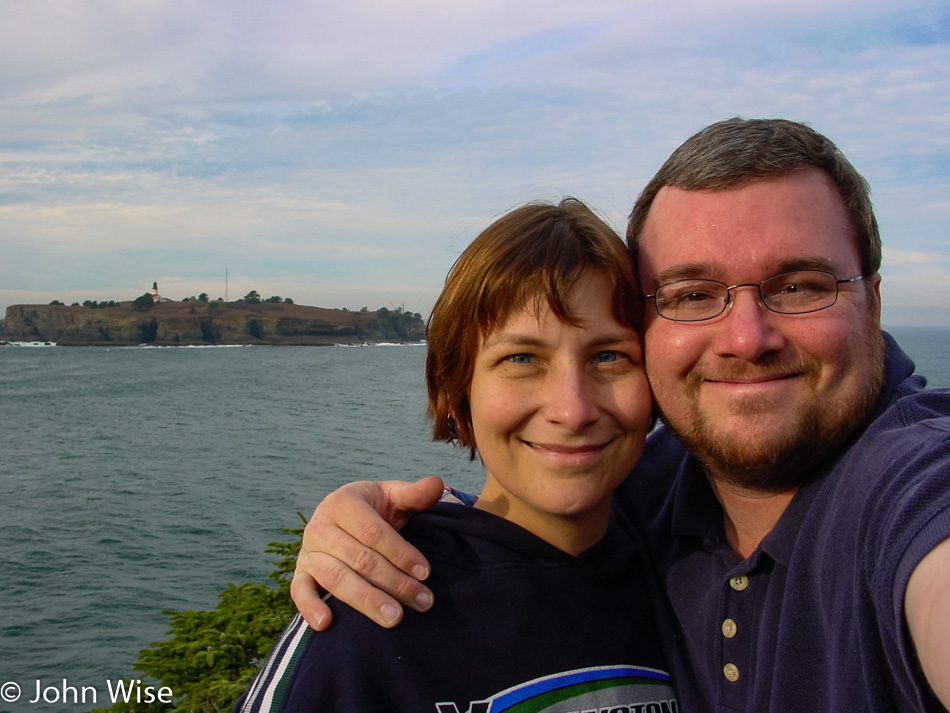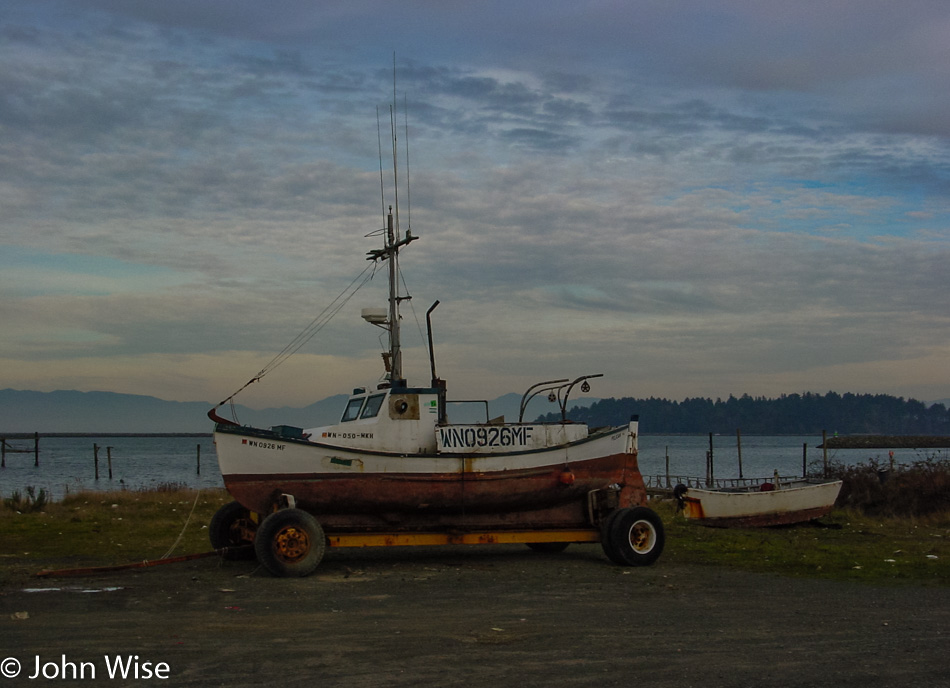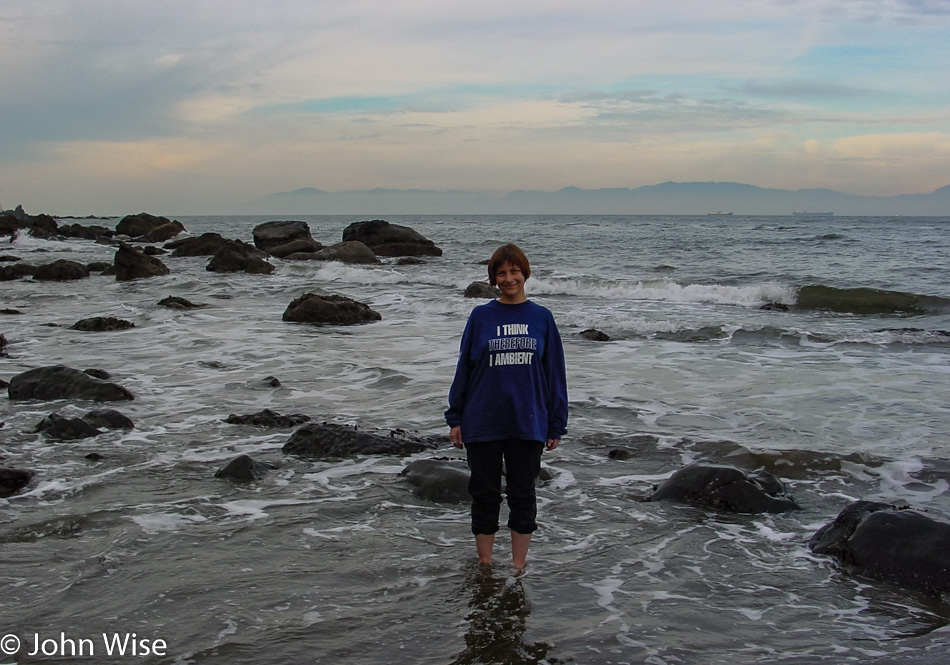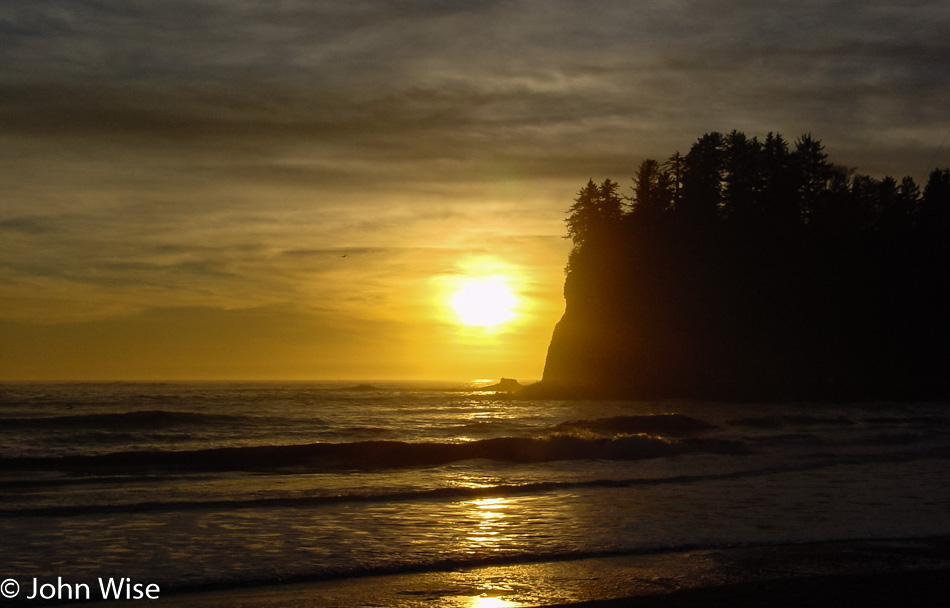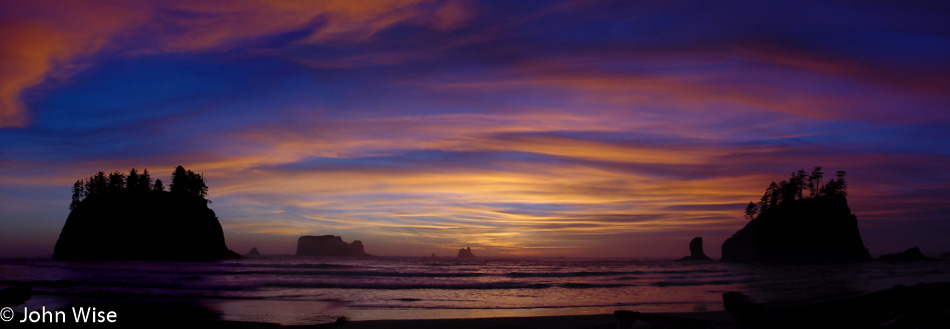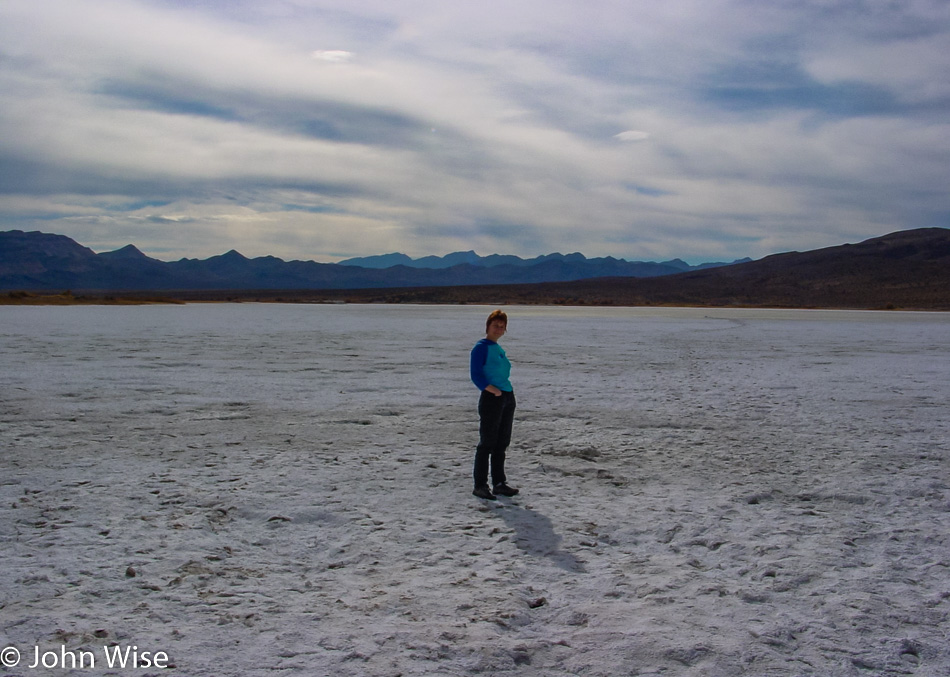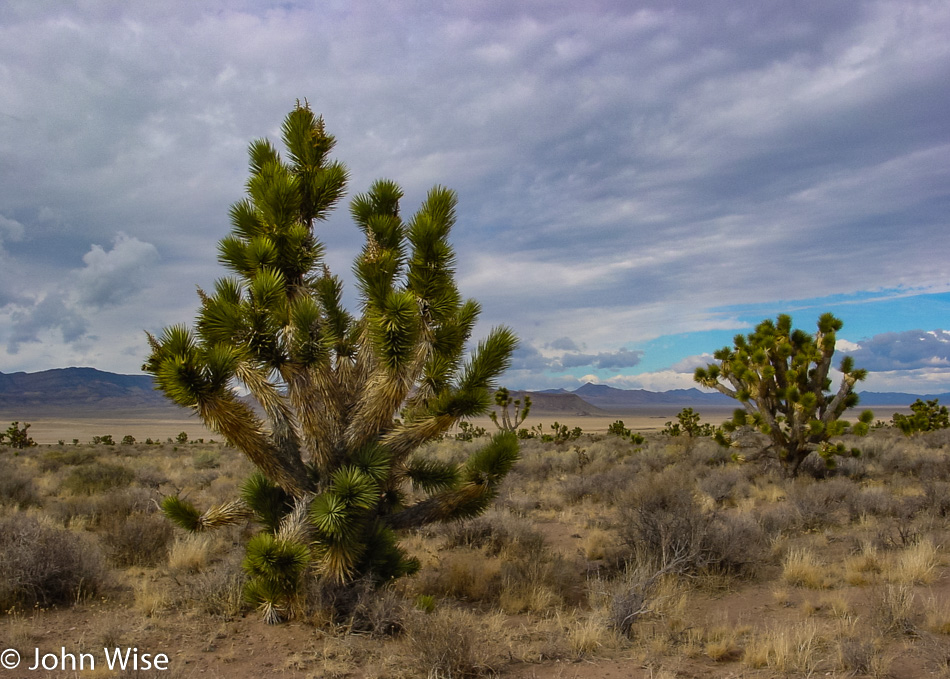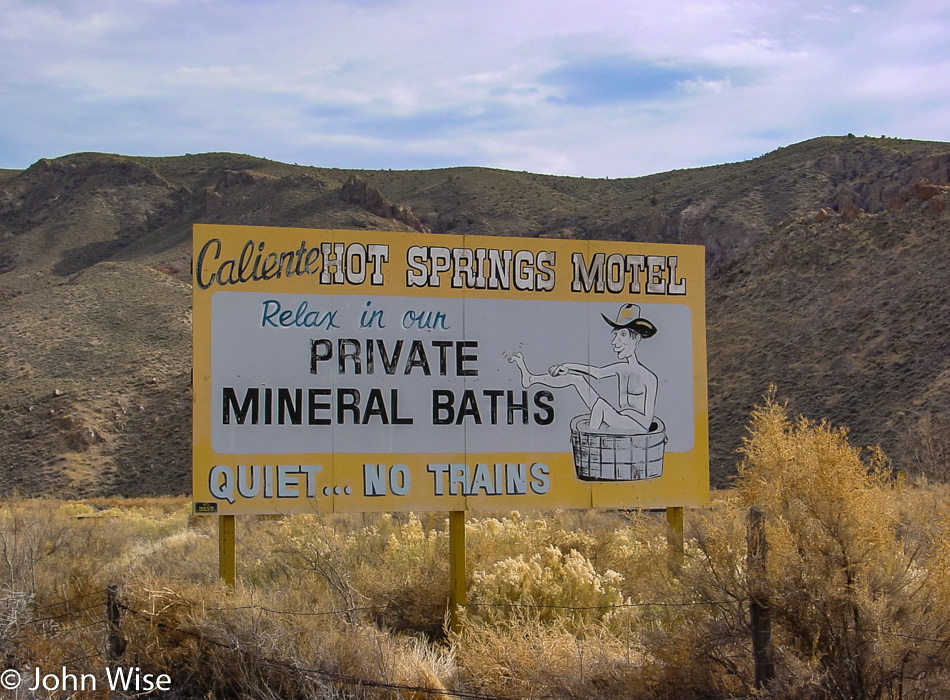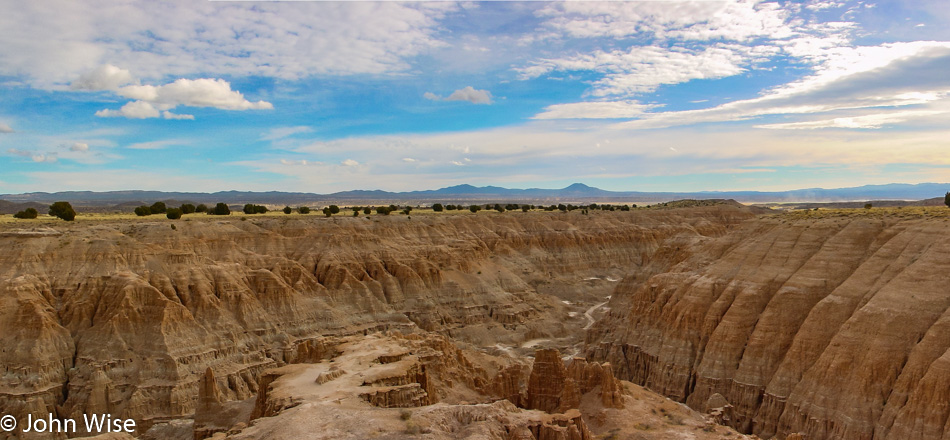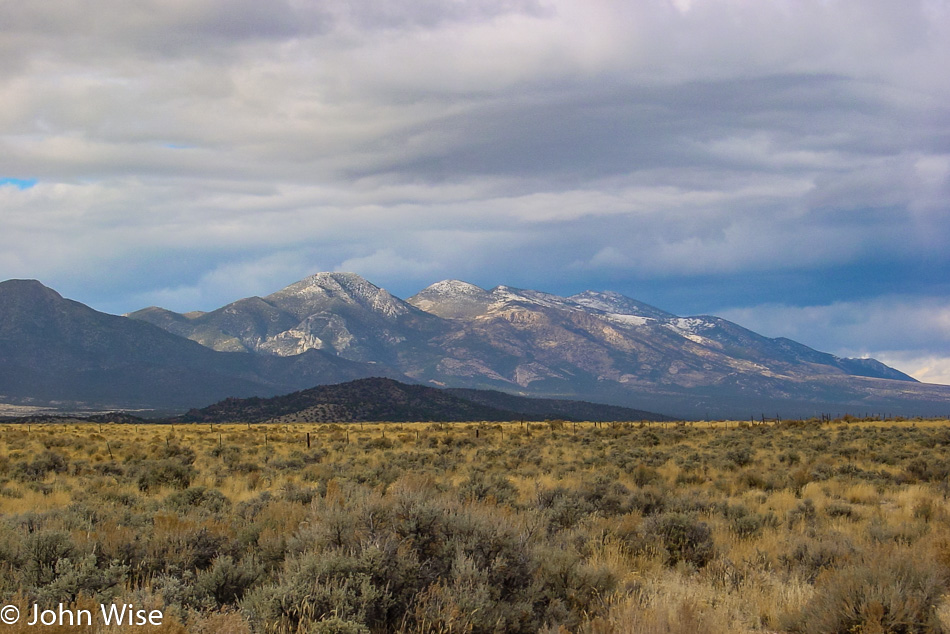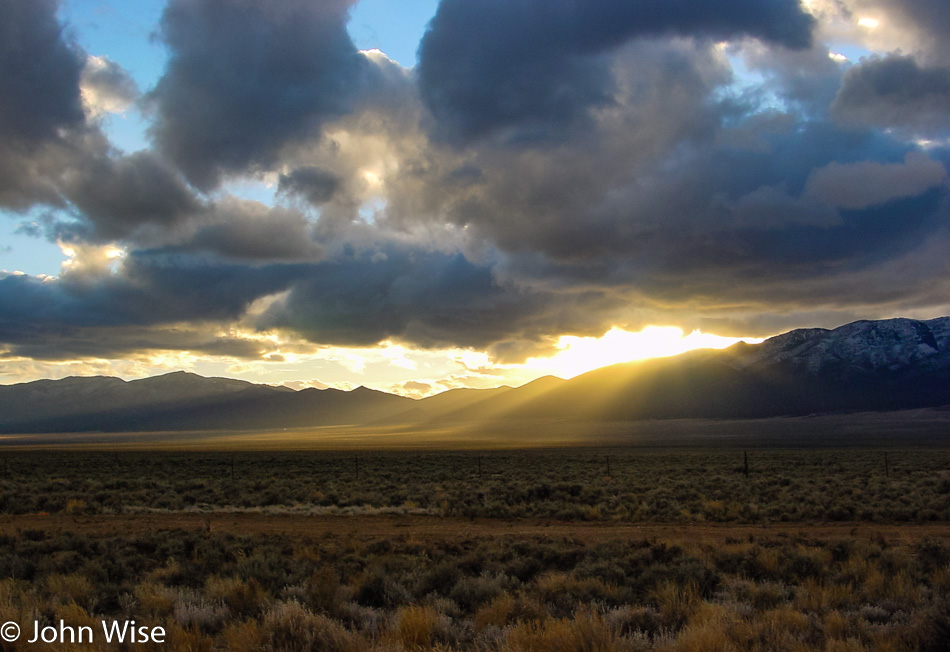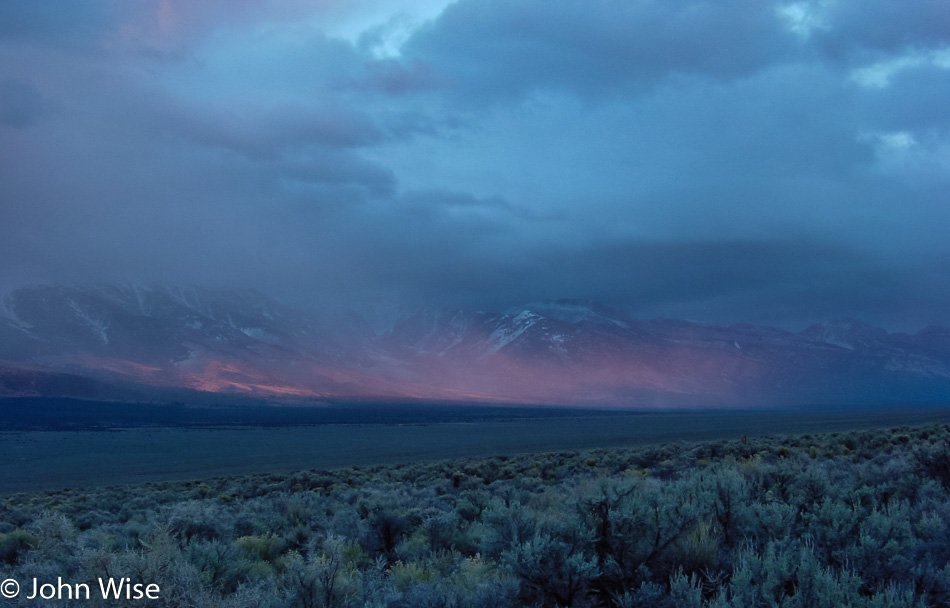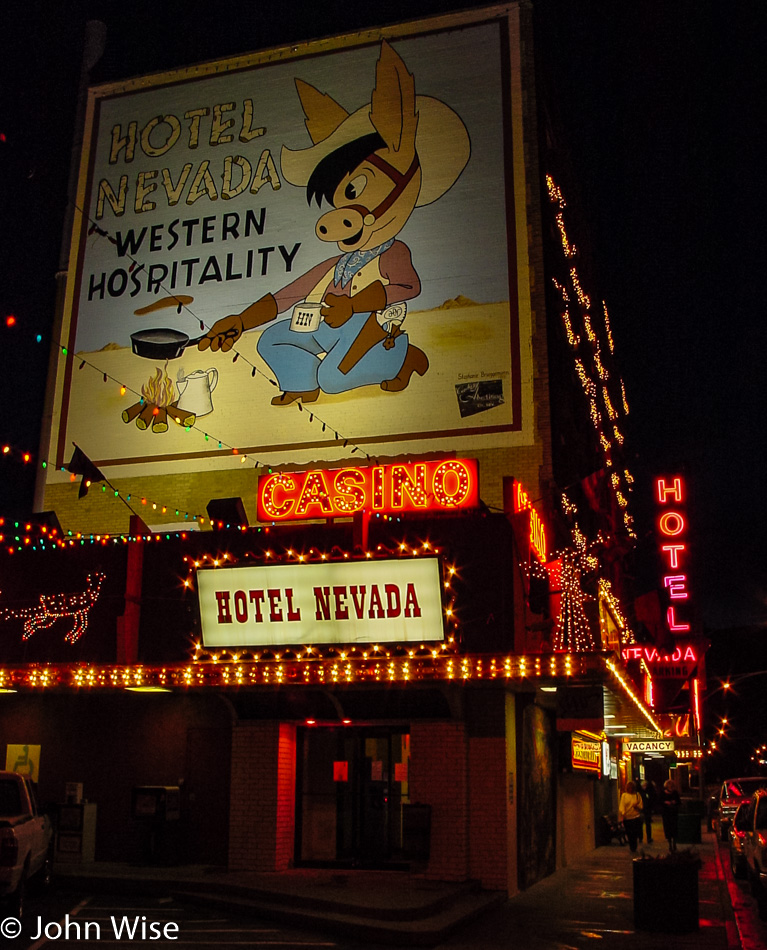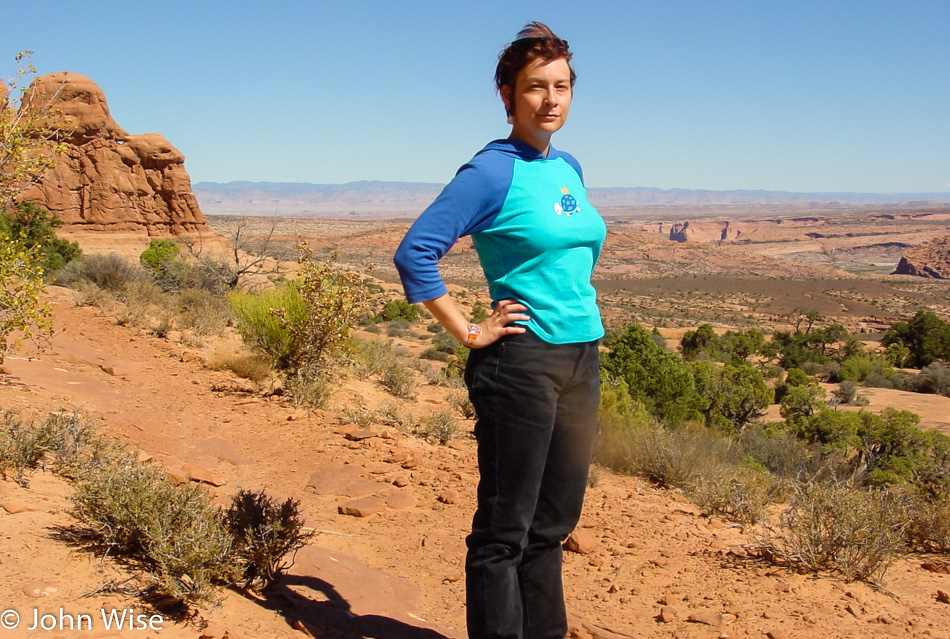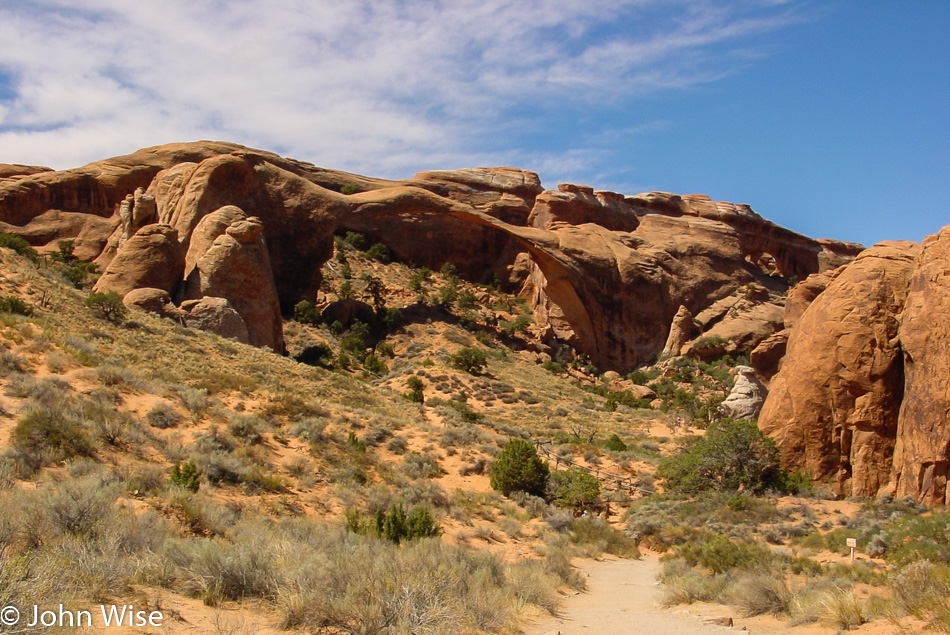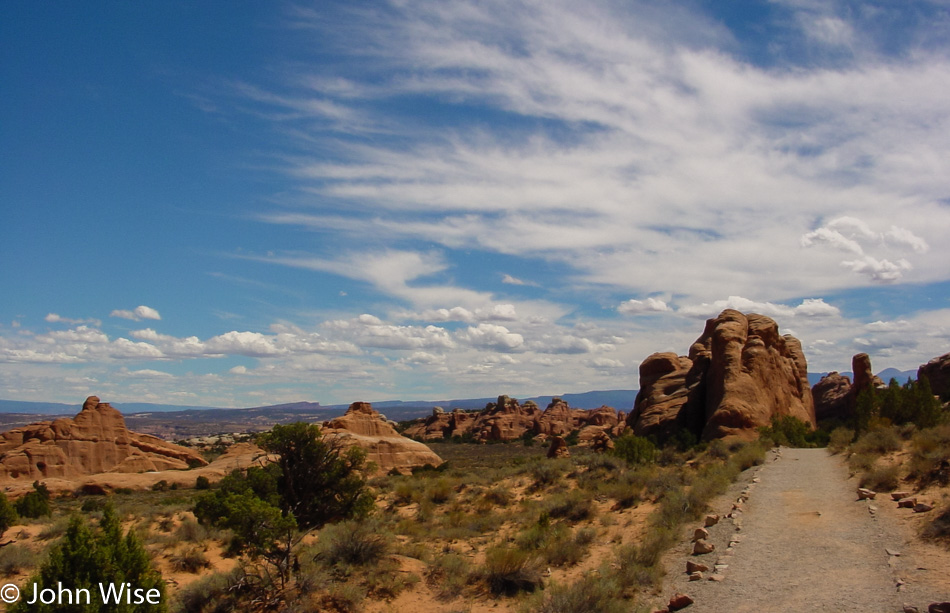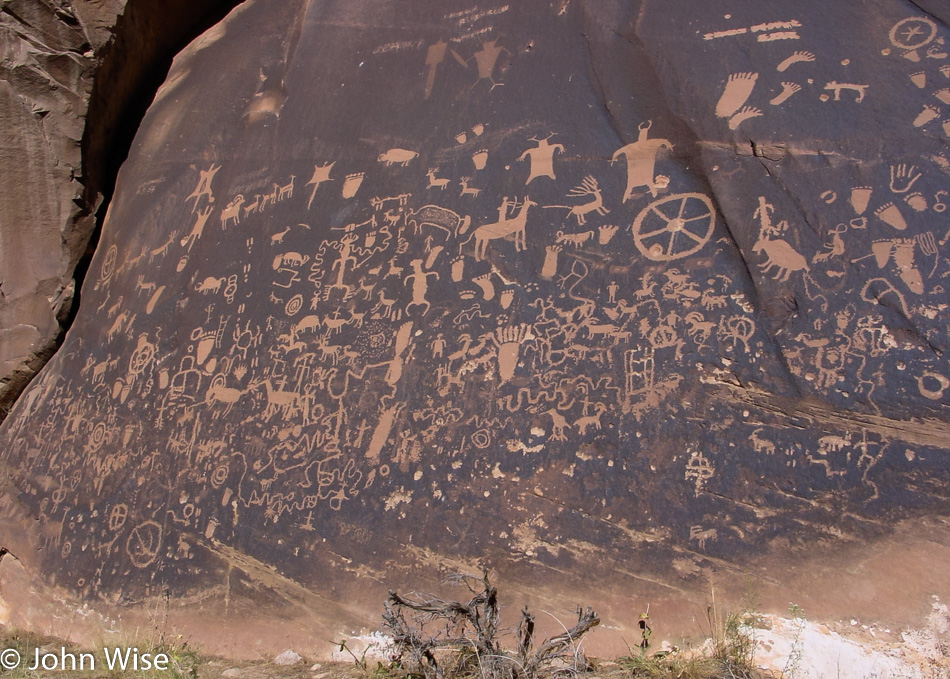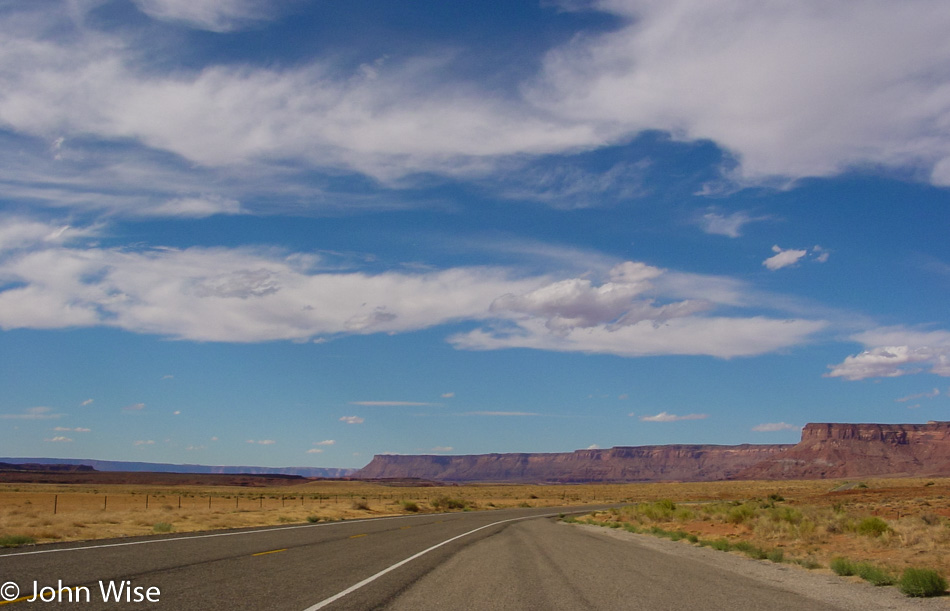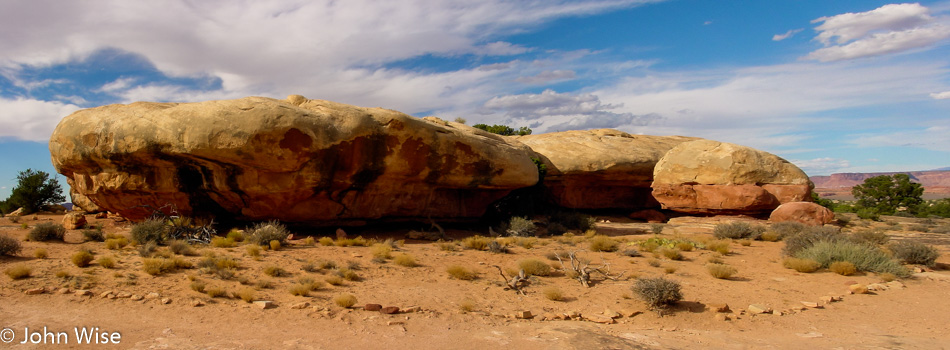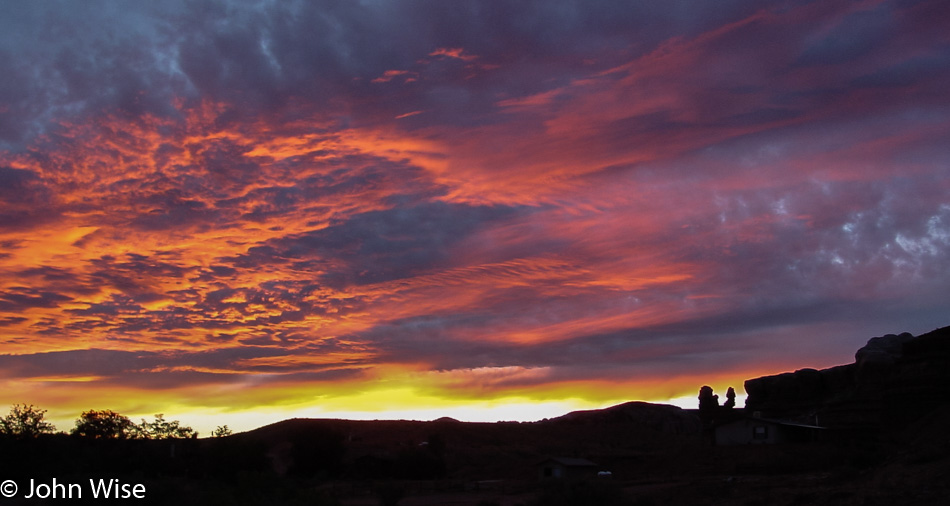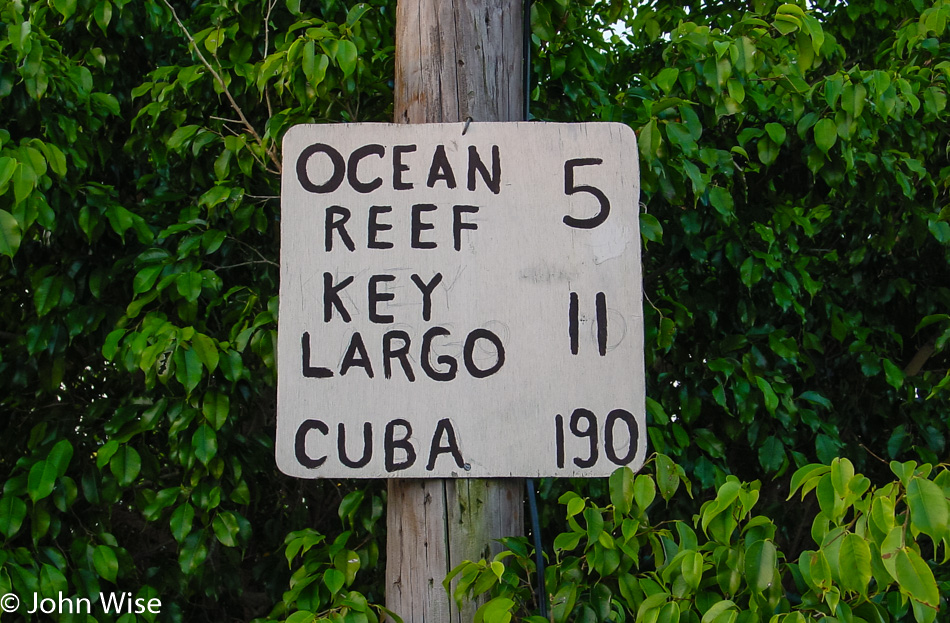
We wake in Homestead, Florida, the city that had borne the brunt of Hurricane Andrew back in 1992. It’s our sixth day out with a plan to meander down the Keys. Instead of taking Highway 1, which we have to return on, we are entering the Keys on Card Sound Road.
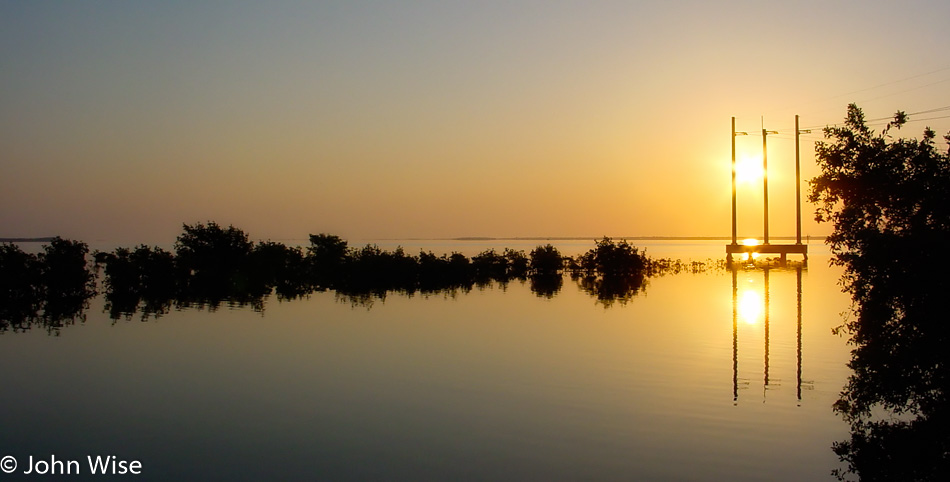
A perfectly clear sky has made room for a well-rested sun to rise unobstructed, bathing the morning in orange and gold before alighting the heavens with a radiant blue ceiling.
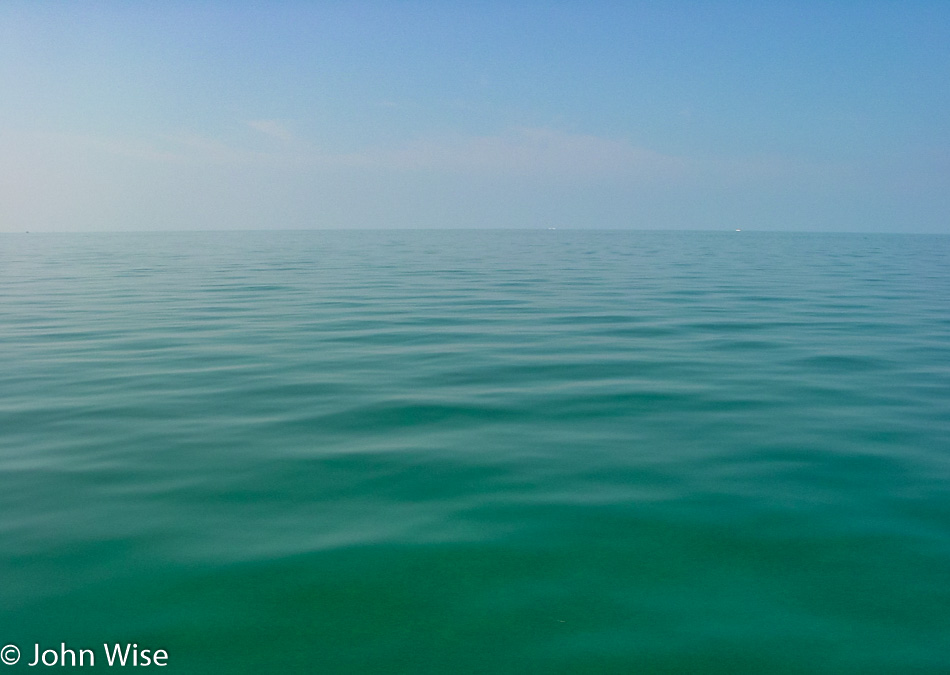
We check in with the John Pennekamp Coral Reef State Park for a glass-bottom boat tour of the nearshore waters. The tour departs at 9:00 a.m., giving us an hour, so we check out the local waters looking for fish or other signs of life. The visitor center has a small aquarium that we spy on for a moment before we recognize it’s almost time to board our boat. Our three-hour cruise won’t deposit us on any exotic islands today, but we are expecting a spectacular tour. Slowly, we are pulling out of the dock area, passing mangroves to our right and left when in front of the bow, half a dozen large rays swim along with us before diving below the green waters.
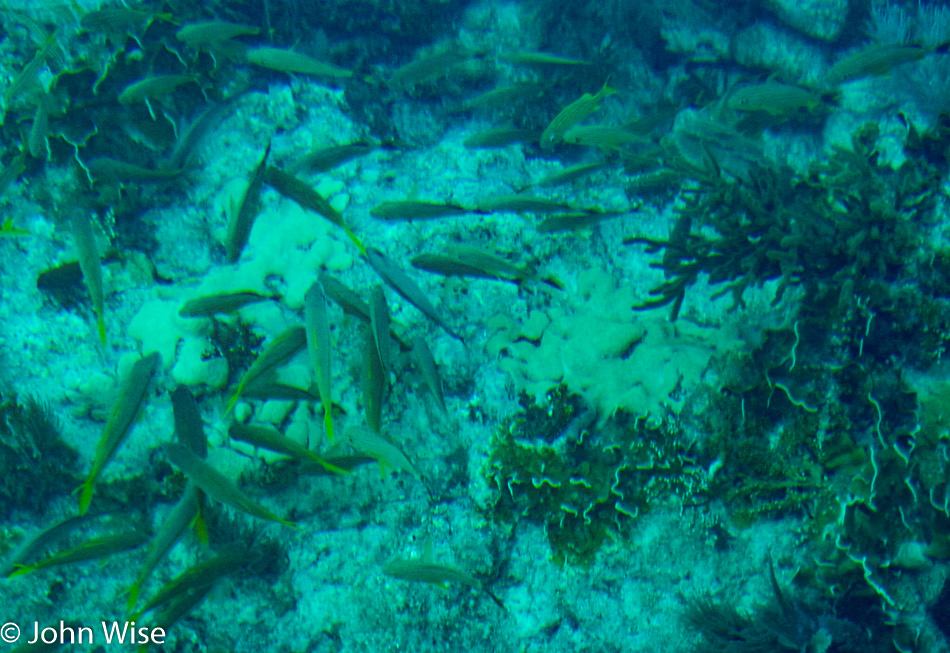
Under the best of conditions on a glassy ocean and not a cloud on the horizon, we travel southeast. After an hour we slow to a float with the clearest of waters, giving us a wonderful view of the sea life teeming on the reef. Our captain deftly positions his craft, offering up parrotfish and multi-colored schools of other fish that there are so many of it’s hard to keep up with which species are which. Corals, plants, and a plethora of shrubbery appear so close to our eyes that the impulse to reach out and touch them is tough to resist.
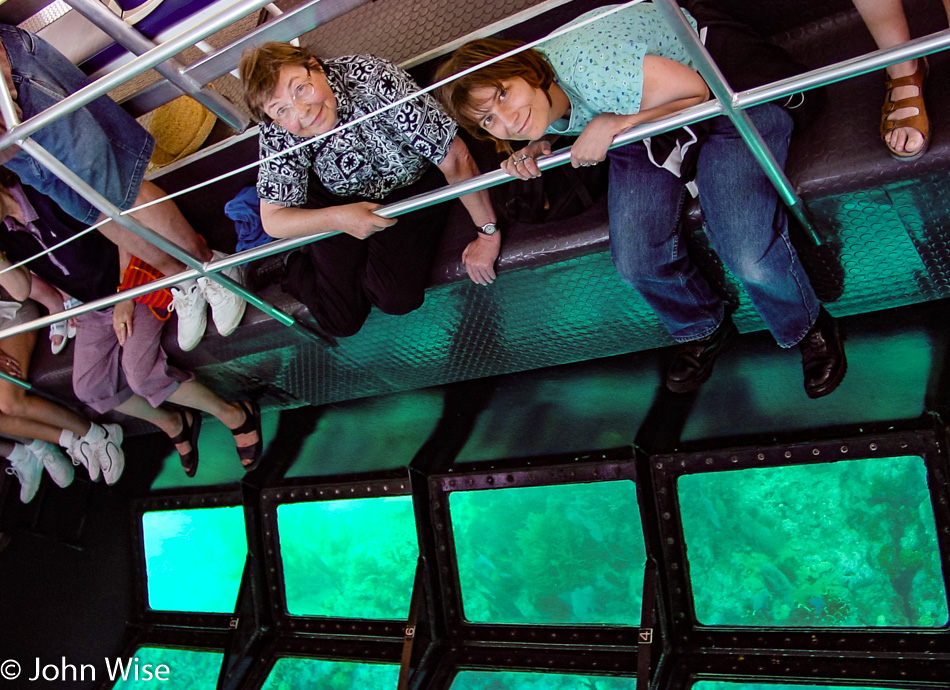
It’s almost like scuba from the view of things, then again, not. Still, this is pretty cool, and Jutta is loving her time out on the sea.
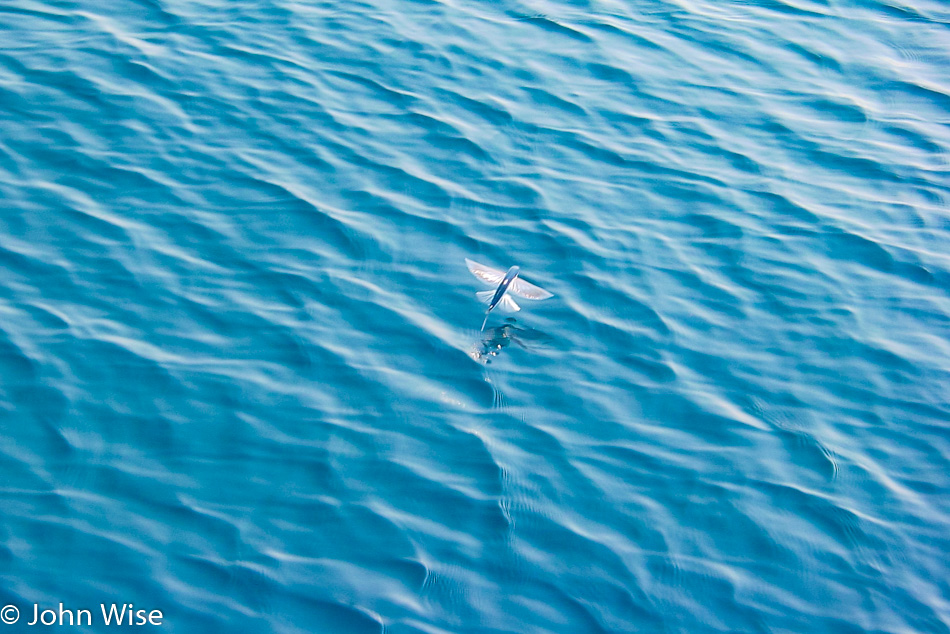
The captain, recognizing the incredible clarity of the water on this particular day, offers us a rare chance to view an artificial reef in superb detail. On our way to this sunken treasure, dozens and dozens of flying fish that thrust out of the water, skimming well above the surface for distances of up to 300 feet, join us!
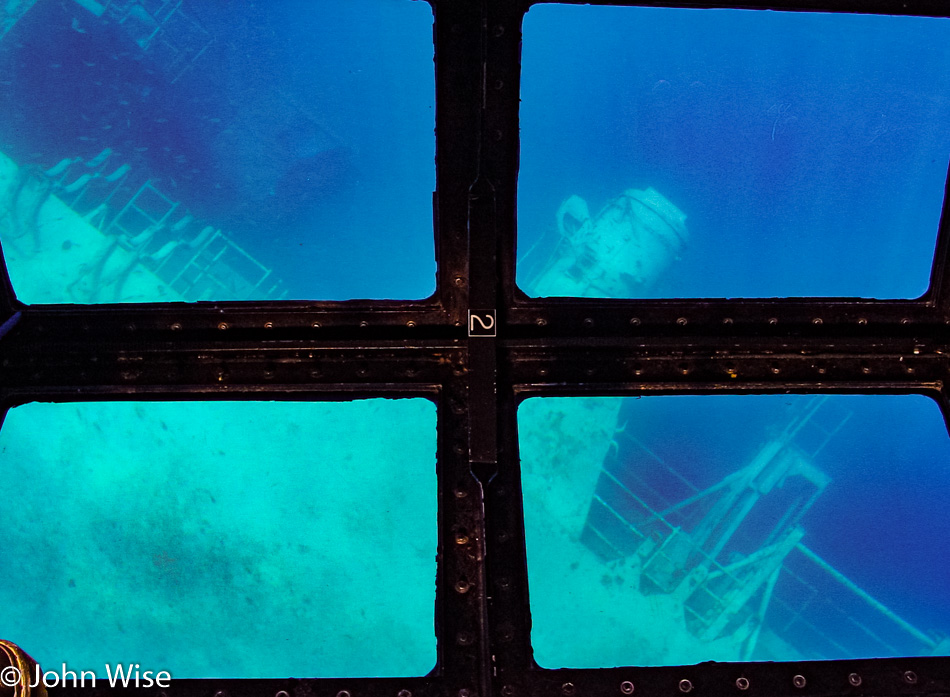
Twenty minutes later, the ‘reef’ comes into view: it’s the USS Spiegel Grove. The ship lies on its side on the ocean floor 130 feet below us. Being 84 feet wide and 510 feet long, the ship at its widest point is only 46 feet below us. Truly amazing today is that we can see the bridge of the ship which is so far below the surface. We were told this is exceptional water clarity and a rare day indeed. Sadly, we departed after 15 minutes; our tour was almost over.
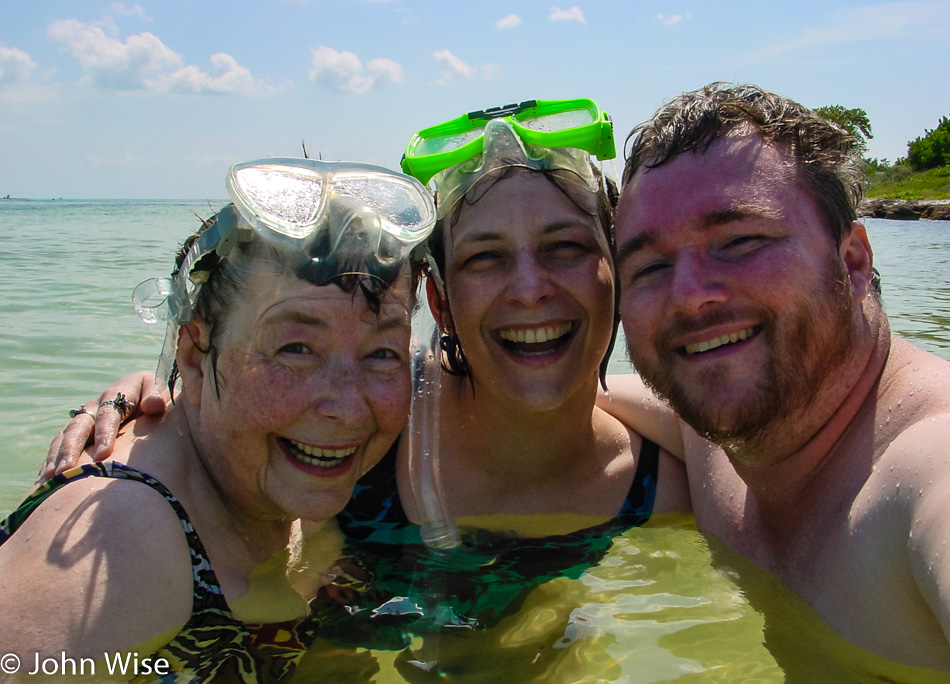
Driving south on Highway 1 around noon; we bask in our ocean adventure. Before we know it, mile marker 37 is ahead of us, signaling our next destination, Bahia Honda State Park. A surprise awaits Jutta, which it turns out seems more of a fright than anything pleasant. Caroline takes her mom to a changing area while I visit the gift shop. Upon Jutta’s approach, she eyeballs the snorkeling equipment in my hands and quickly exclaims that she “doesn’t do that.” Fair enough, as my mother-in-law is 68, so I ask if she’ll oblige me and put on the mask and just look in. Standing in chest-high water, Jutta dons the mask, dips her face past the surface, pops back up, and blurts out an enthusiastic, “I do that!”
We float about, taking our time exploring the coast, occasionally sharing something we find exciting or beautiful. We float about a bit too long. I likely have third-degree burns and will pay dearly in the coming days for not wearing sunscreen on my back. While the burns aren’t literally third-degree, they are still painful enough for me to make one of those rare concessions to Caroline that she was correct and I should have let her layer on the sunblock.
Intensely happy, I think we all feel that we have left the most grueling part of the road trip and are beyond doubt on vacation. Before leaving the beach, I snap a photo of us still in the water and feel as close to Jutta as I ever have, as I see her enjoying herself like a child at play.
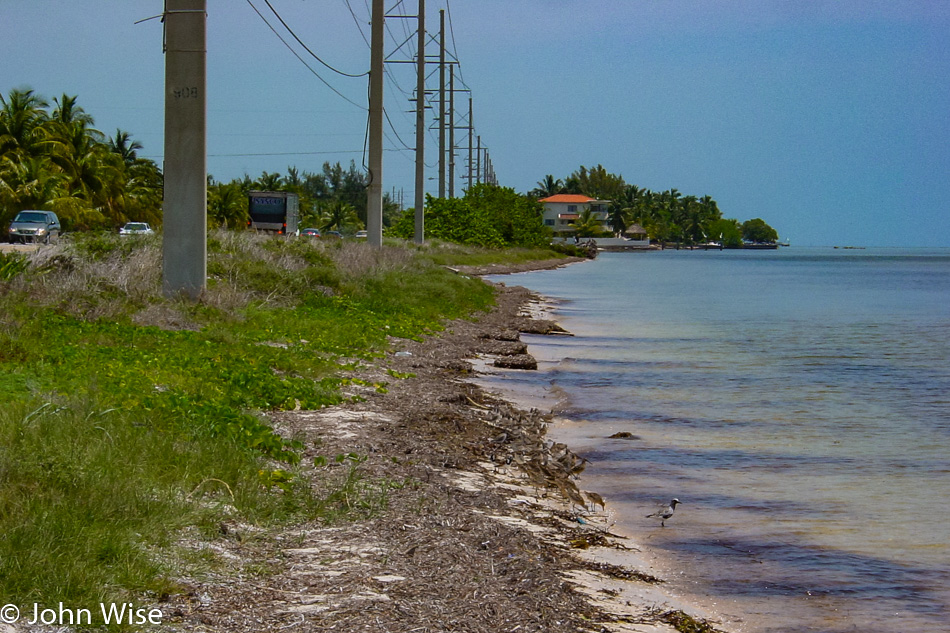
The road through the Keys sometimes finds itself seriously close to the water’s edge. This mix of bridges and tiny islands certainly lends itself to the sense of going somewhere profoundly different than anywhere else any of us have traveled before.
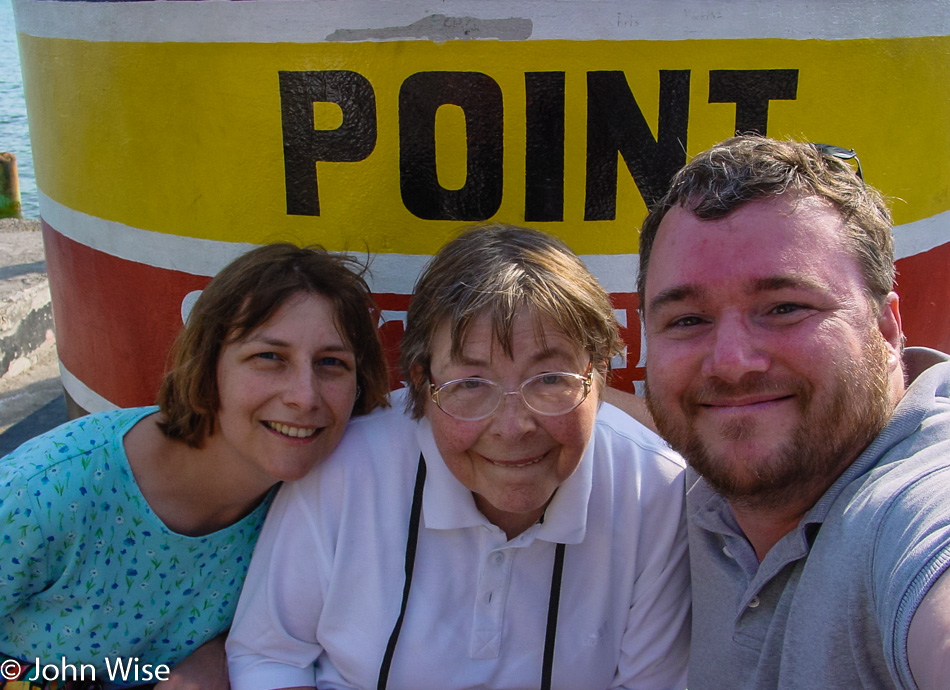
The southernmost point in the continental United States and only 90 miles to Cuba: we have arrived in Key West. The crowds are not conducive to our mood or a pace we can relate to after such a lazy day, so after a quick view of mile marker zero, we turn into a local neighborhood.
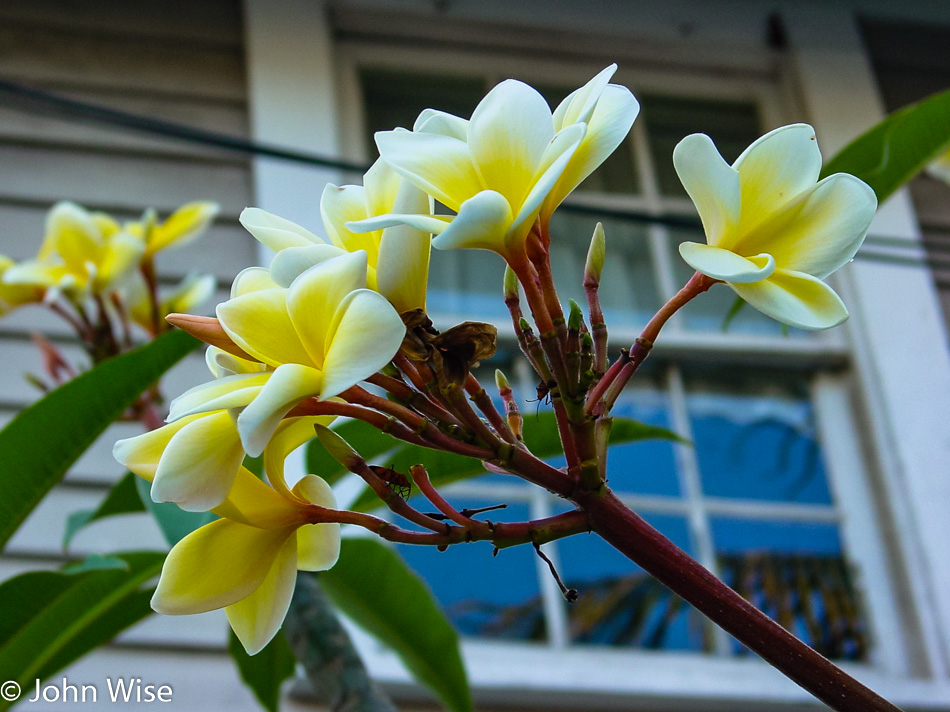
Flowers abound, and while many may find the bars a natural draw or the architecture a beauty to look at, we are too busy gawking at hibiscus, bougainvillea, and plumeria. This, more than Santa Barbara, California, is a flower lover’s paradise!
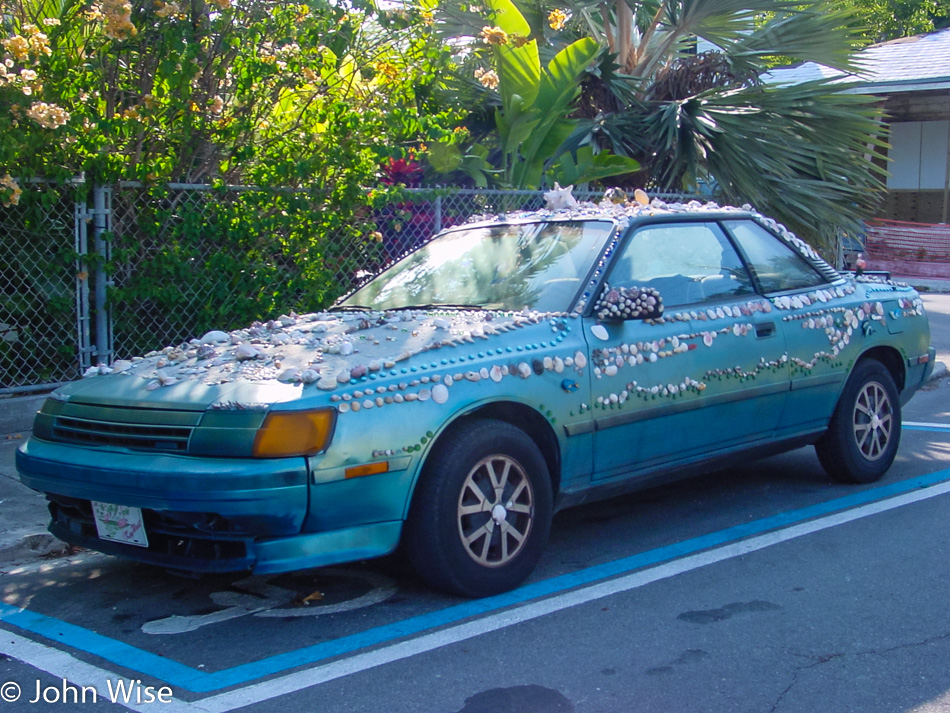
Or maybe a seashell lovers hookup place, too?
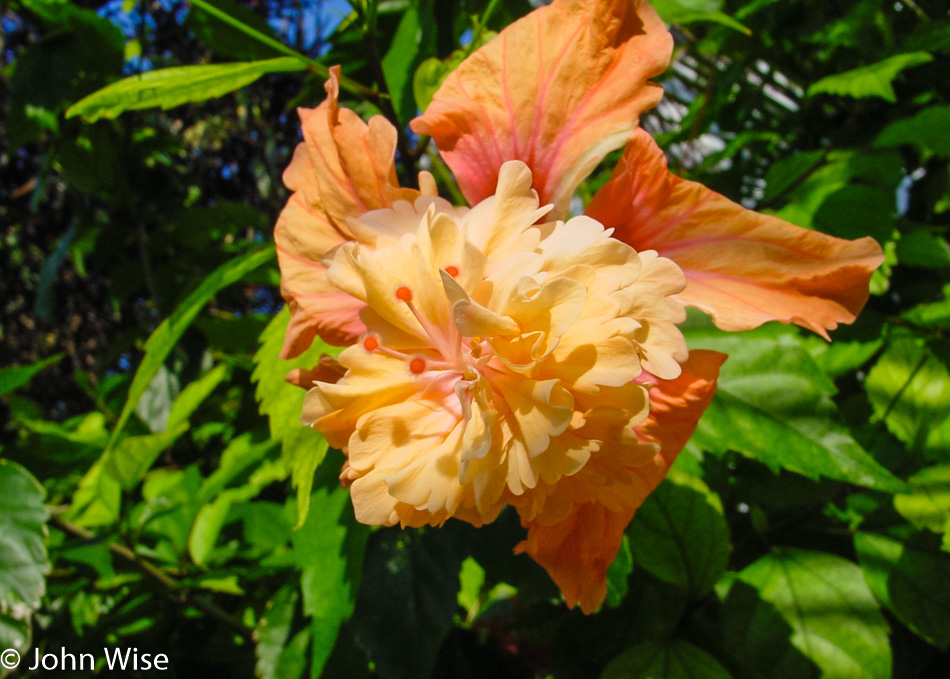
I could have shared many photos of flowers, but then this blog might take on too heavy a botanical slant when there are other things yet to share.
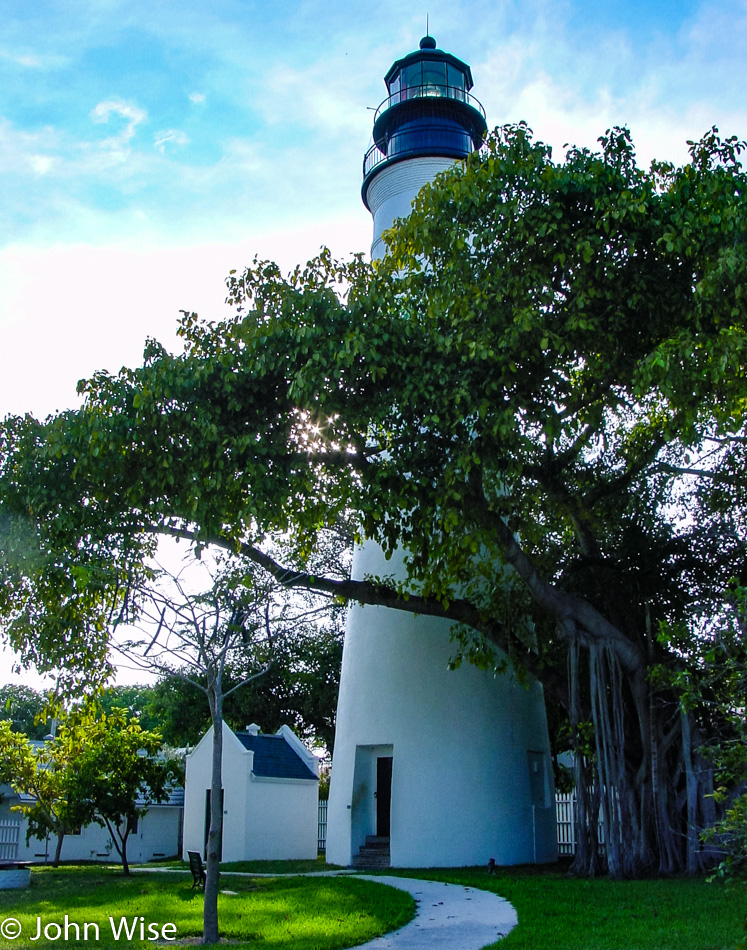
Turning a corner, we find ourselves approaching Ernest Hemingway’s former home, now a museum and tourist attraction. The Hemingway Home and Museum is closed, unfortunately, as it’s after 5:00, and the gate is locked. We will have to satisfy ourselves with a visit to the lighthouse across the street. The Key West Lighthouse & Keeper’s Quarters Museum is closed too, as it’s after 4:30, and its gate was locked even earlier than Hemingway’s.
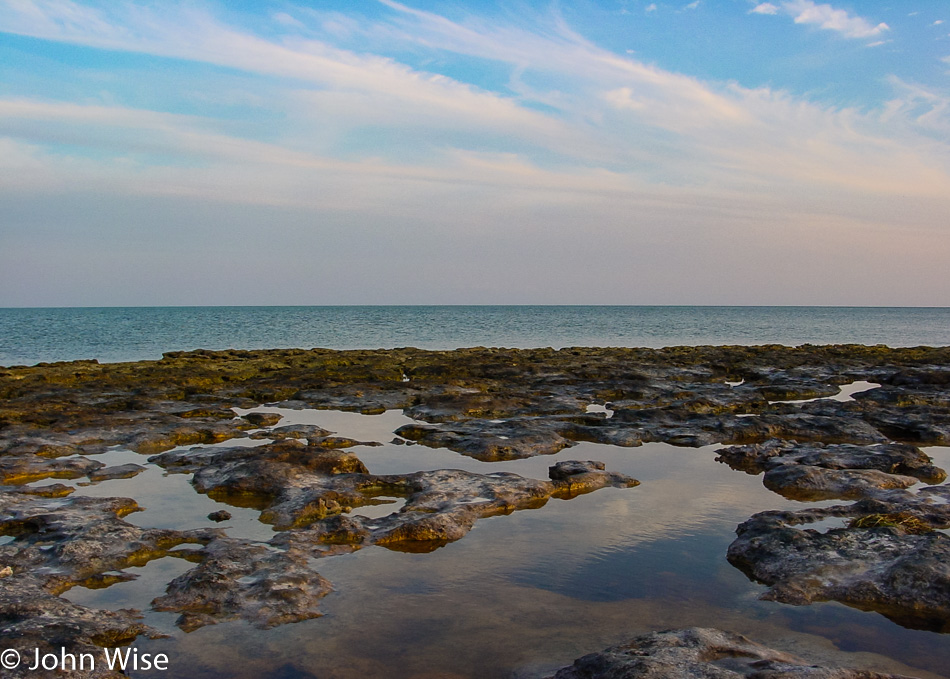
Not having a serious drinker among us that might compel a crawl of the many open bars, we are about to depart when, in my peripheral vision, a business marquee catches my eye. While researching our route across the southern United States and looking for various recommendations for must-see, must-experience, and must-eat at destinations, I was reminded of a name that rang a bell as I sped by. We just passed and need to make a quick U-turn back to the Blond Giraffe.
Although it may not be very accurate to make such a bold claim based on such a limited sampling of key lime pie, I would be willing to tell the world that this is the best key lime pie you will ever find. We drive away, splitting a single frozen, chocolate-dipped key lime pie on a stick, saving three slices of key lime pie for later. Oh my God, this key lime pie on a stick is absolute heaven on earth; whose idea was it to split one three ways? Us car occupants are in ecstasy while simultaneously howling regrets for not purchasing individual pies on a stick. We vow to return someday, but in case that isn’t possible, we keep their website close to someday order that overnight delivered package of 30 slices of chocolate-dipped frozen key lime elation. Yummy.
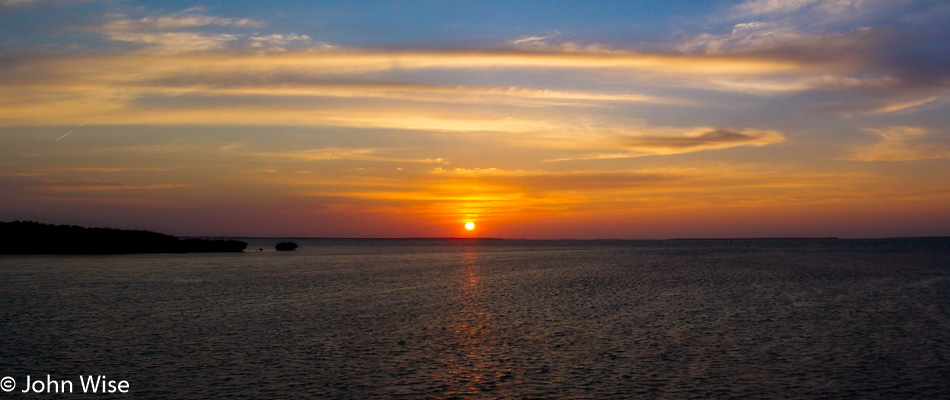
Our time in the Keys is coming to an end. Fort Lauderdale, our destination for the evening, is still more than 180 miles north of us. While the setting sun gently takes its golden light below the horizon, we can afford the luxury of a few more stops along the road north out of the Keys. It has always been difficult for Caroline and me to leave any coast, and the Keys are no exception after this perfect day. With the ocean surrounding us, we share a waking dream of staying right here overlooking the Gulf of Mexico while the final glimmerings of light pave the way to evening until the next morning when we can turn around and watch the first rays rise over the Atlantic.
